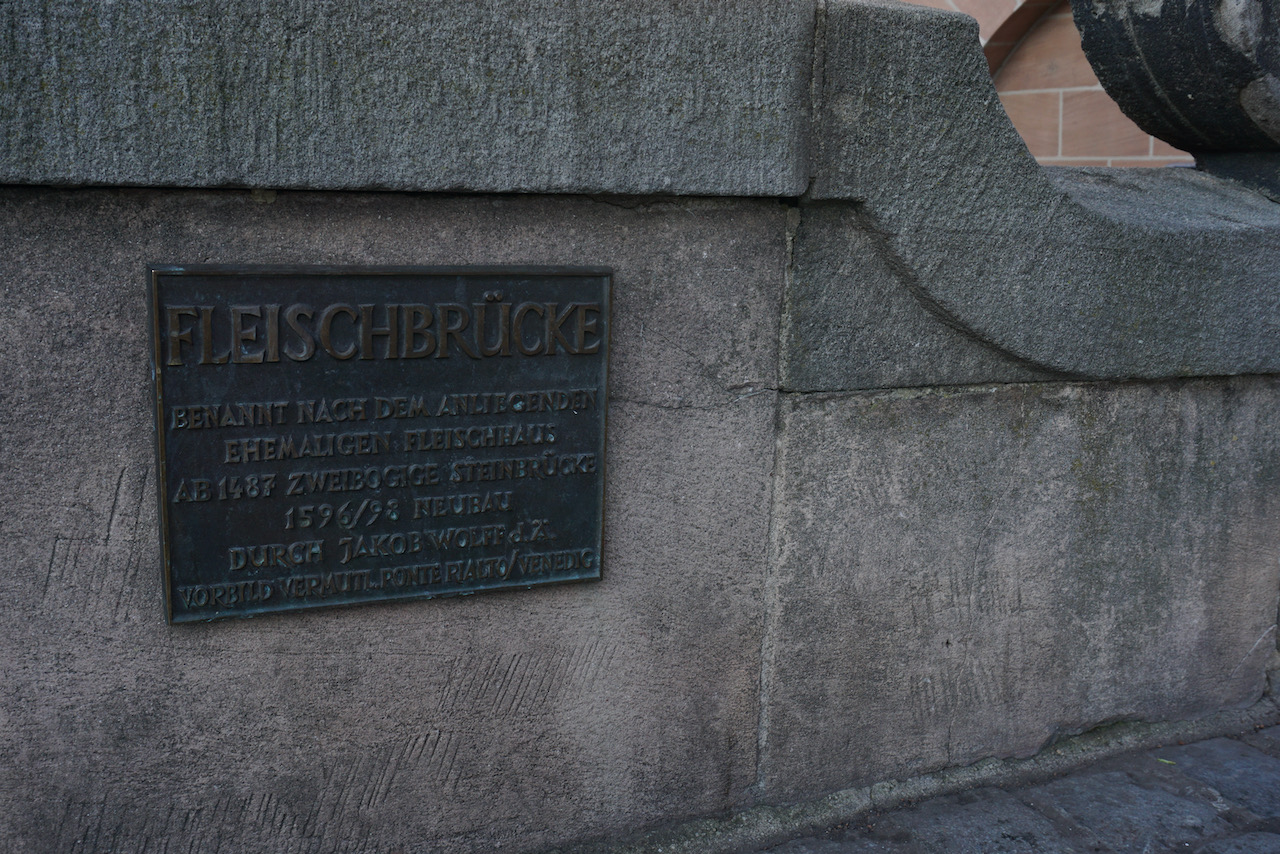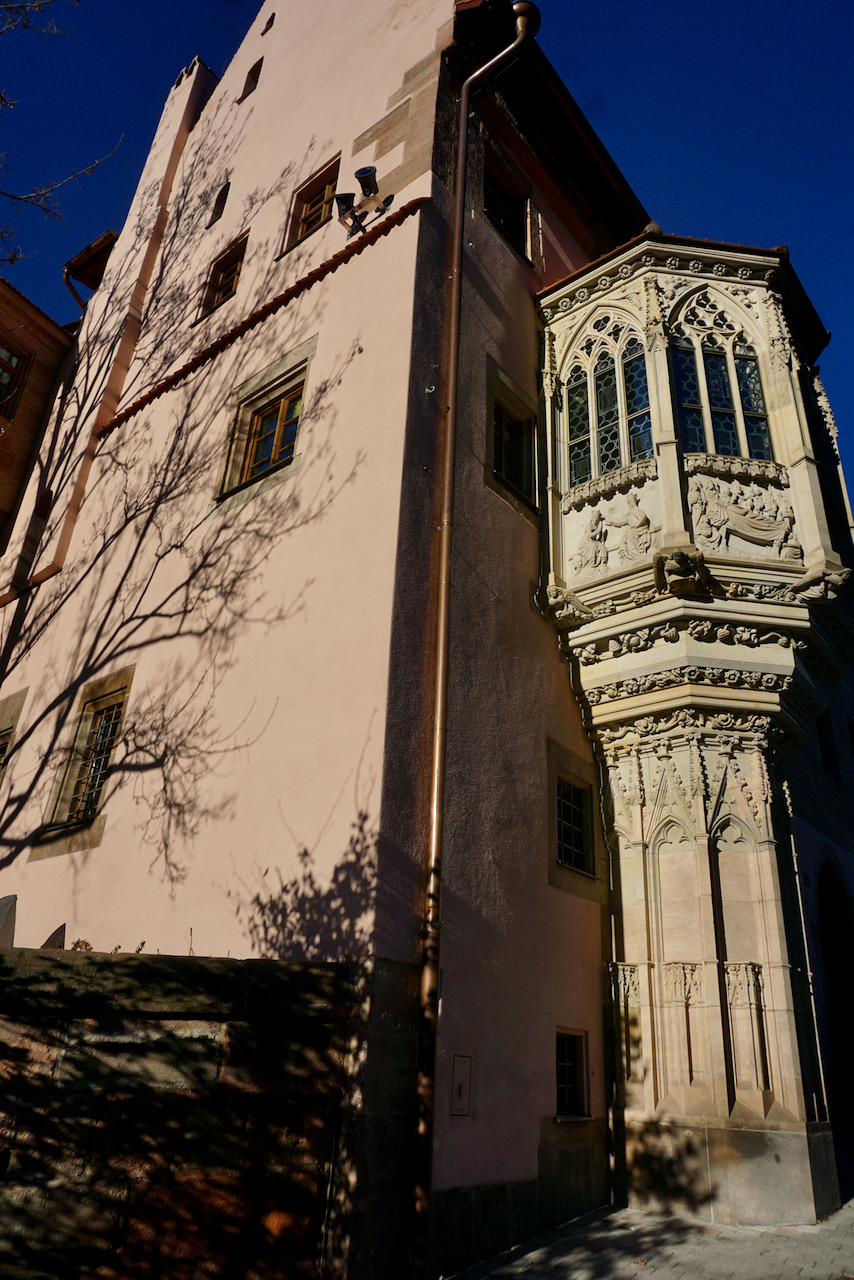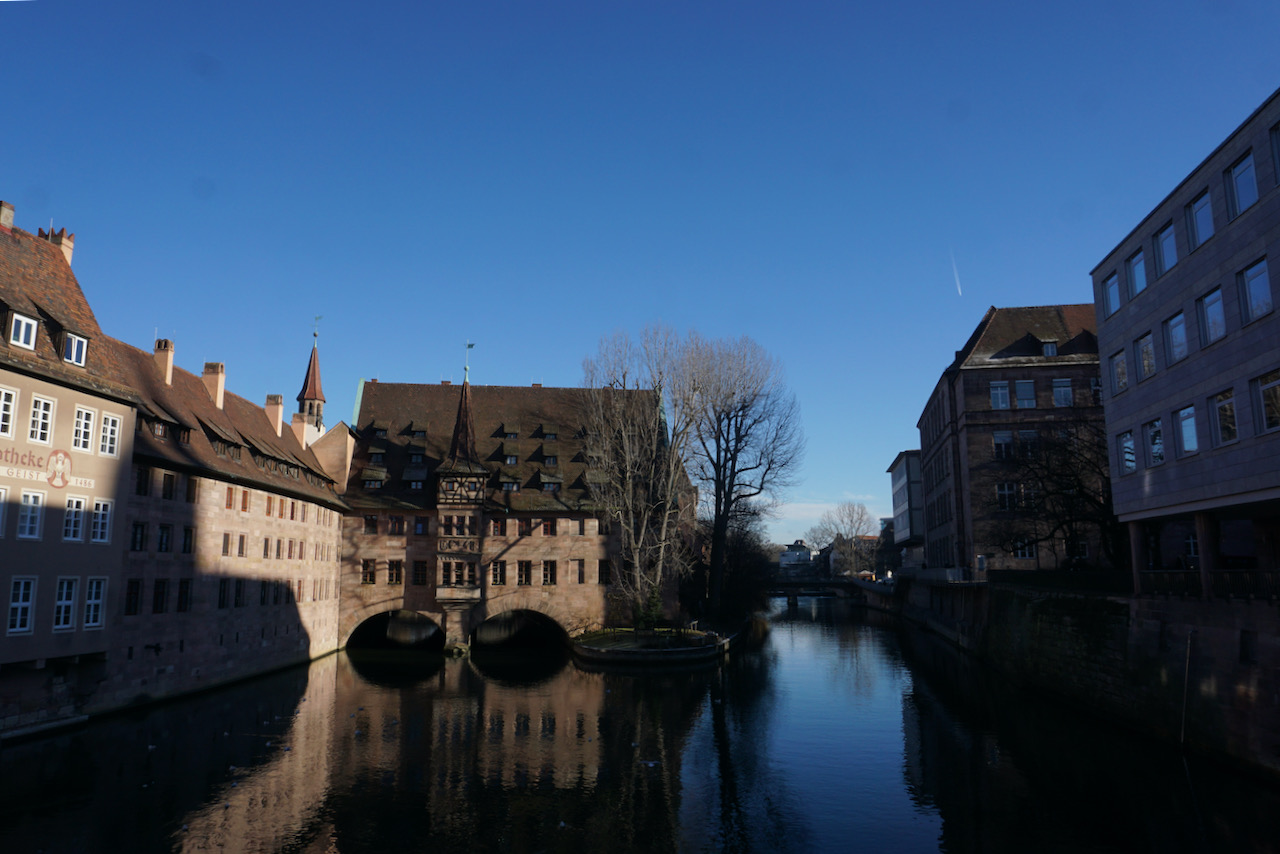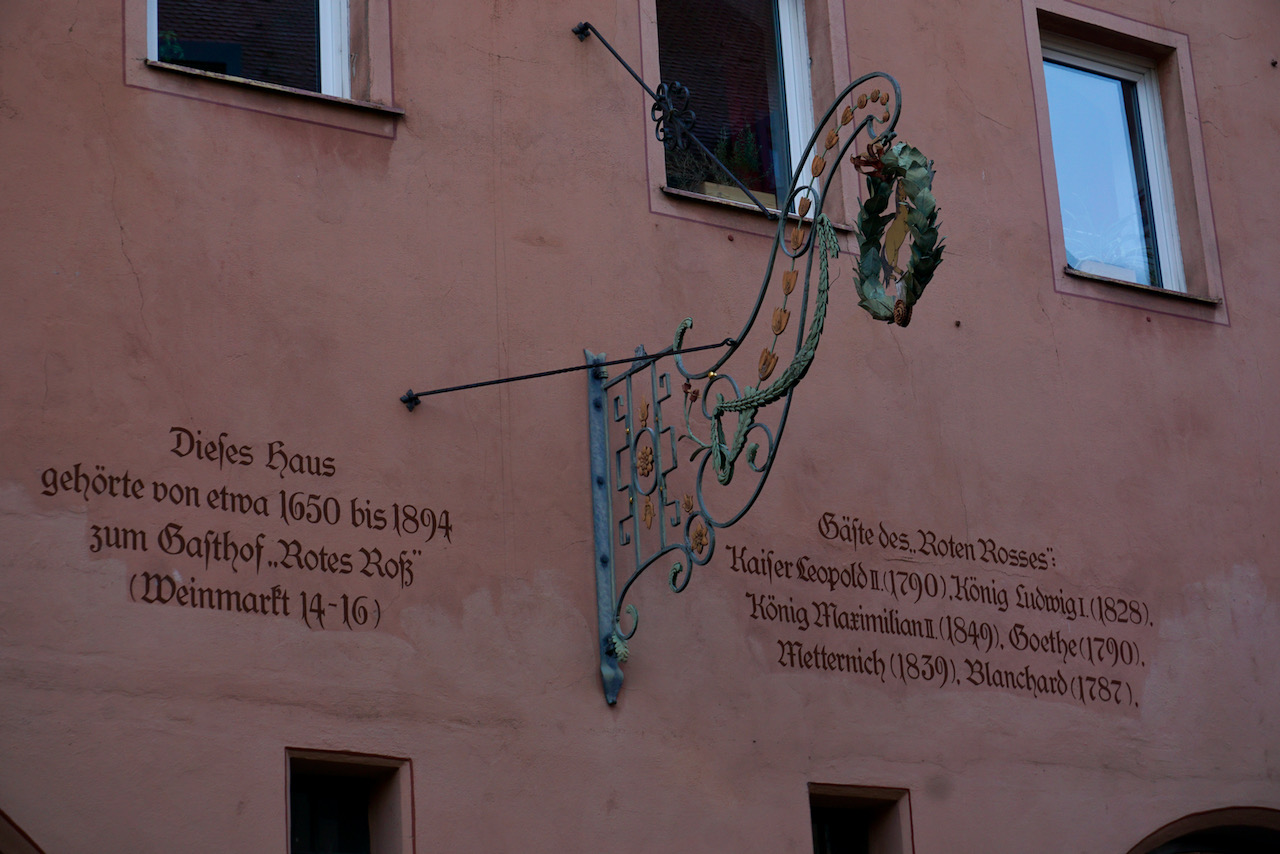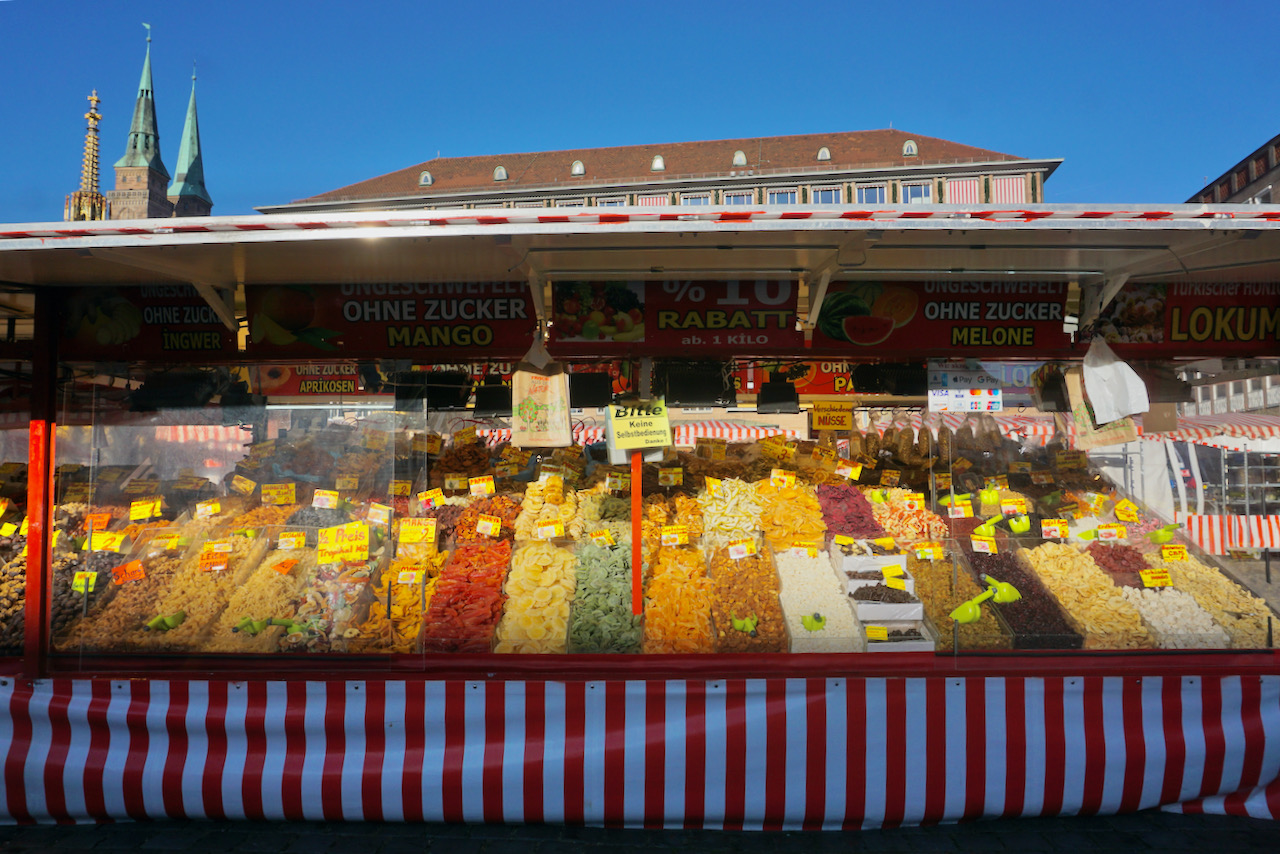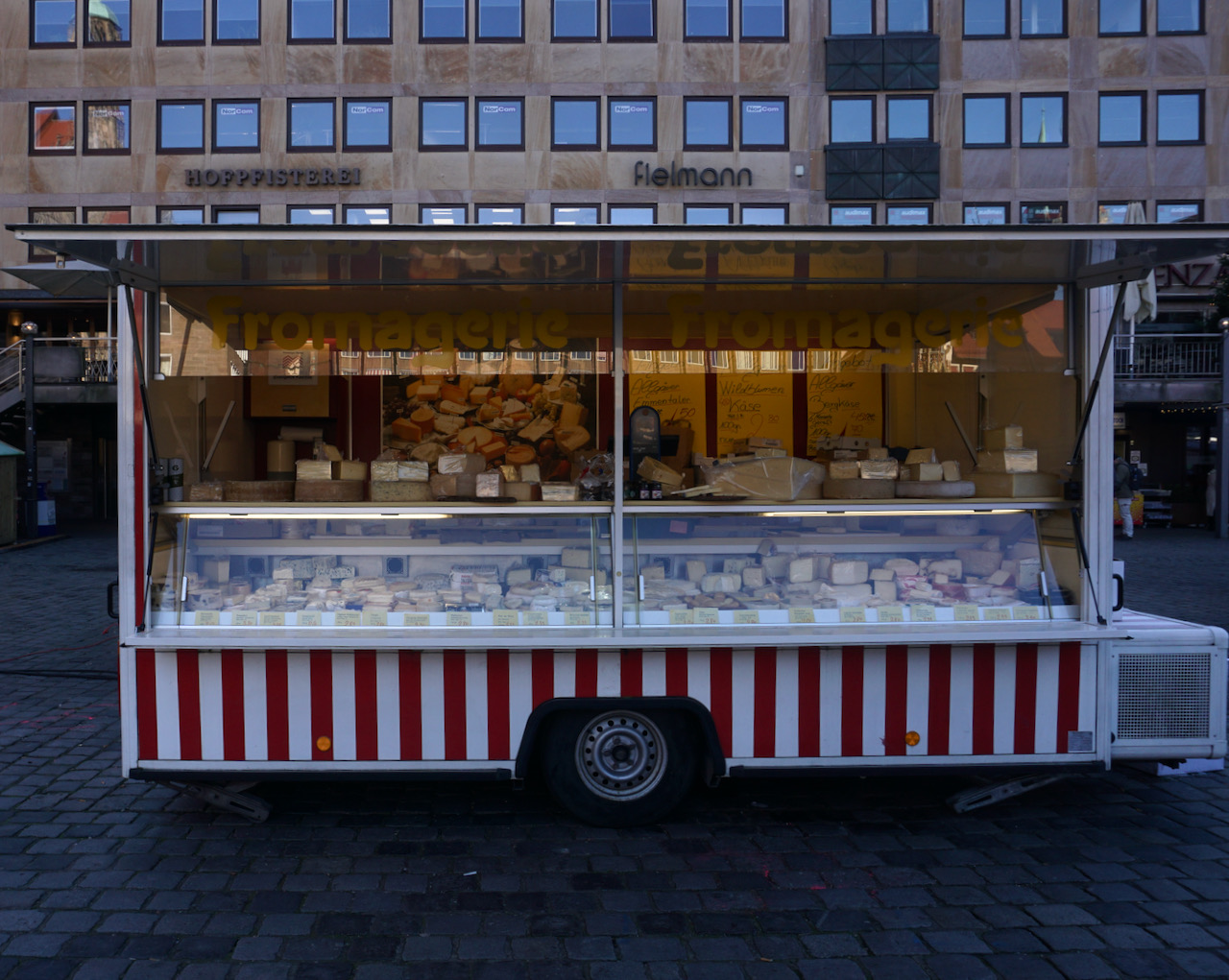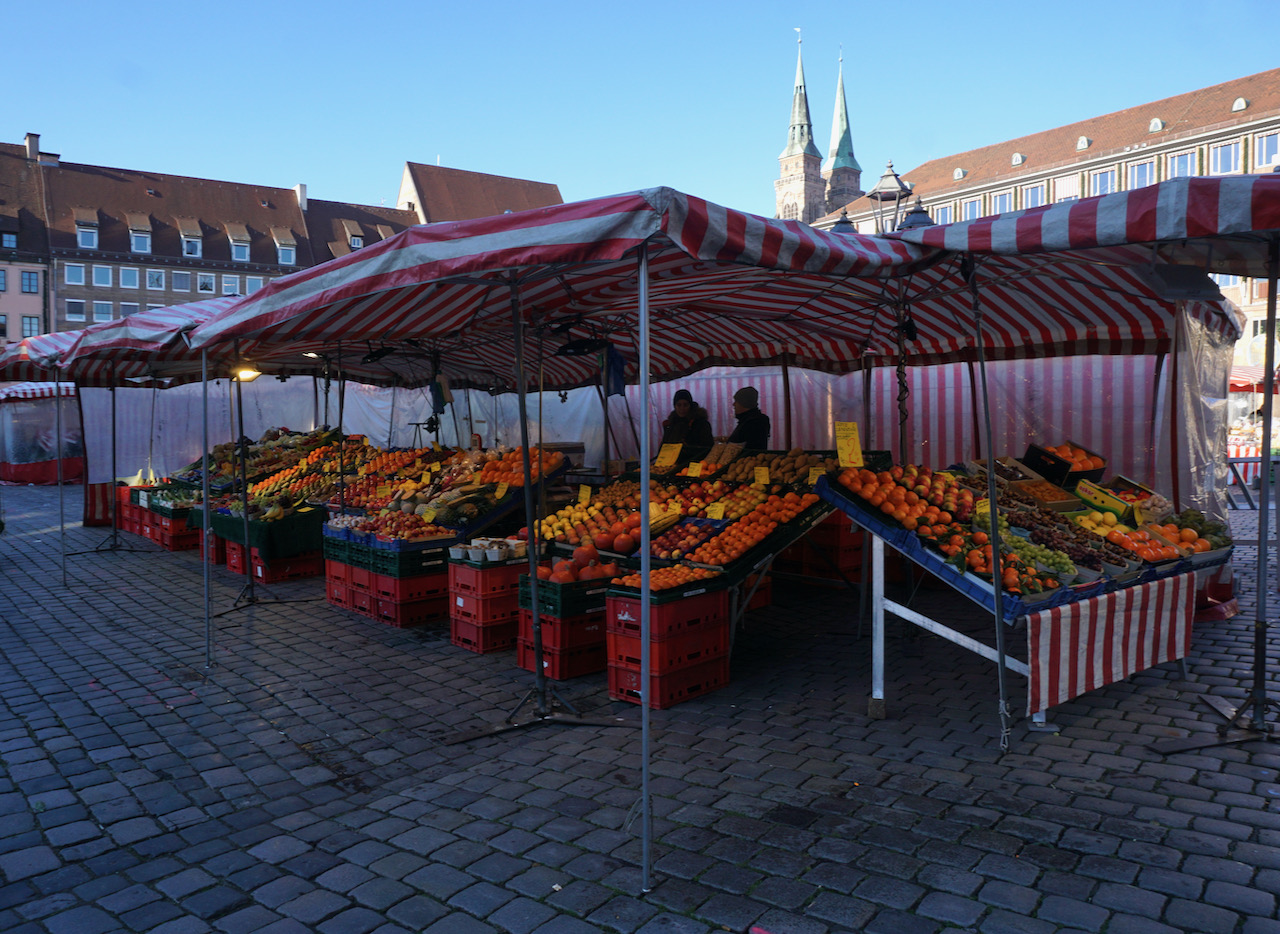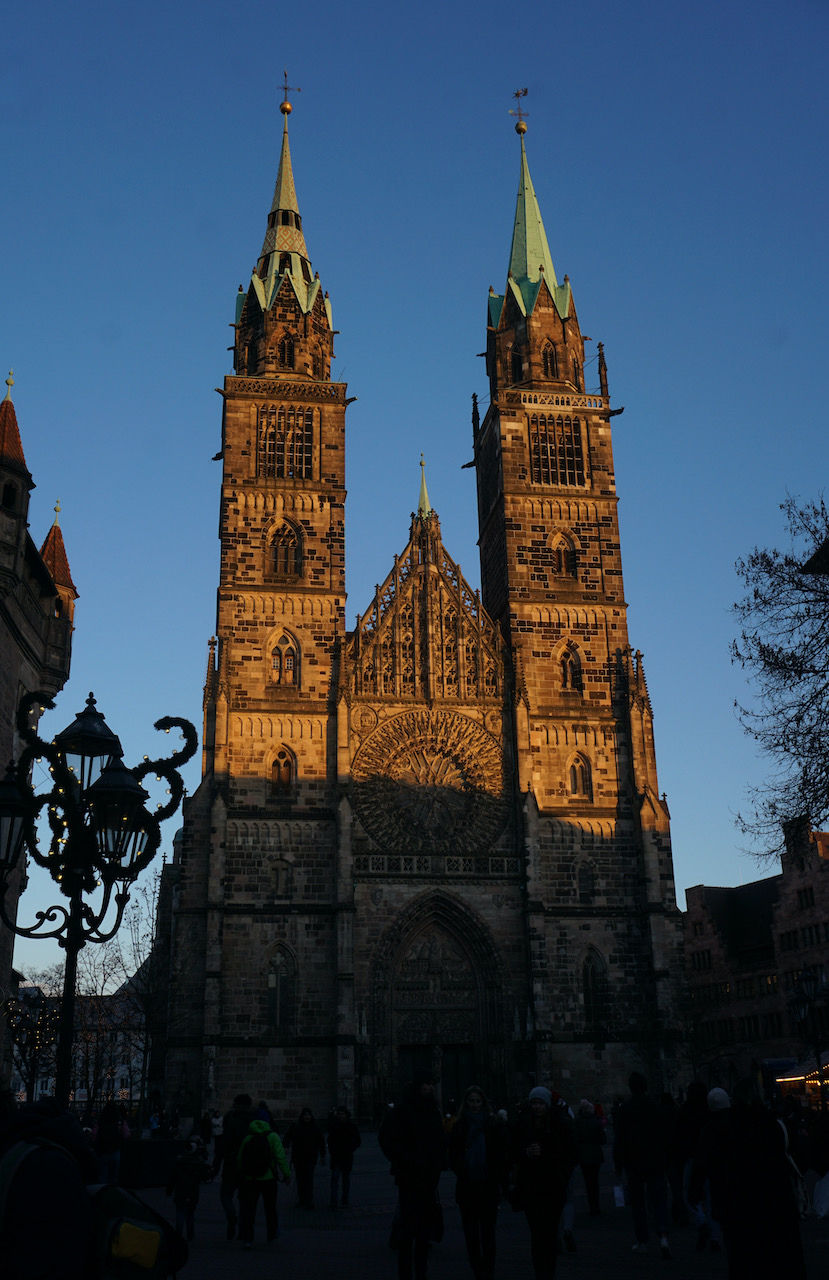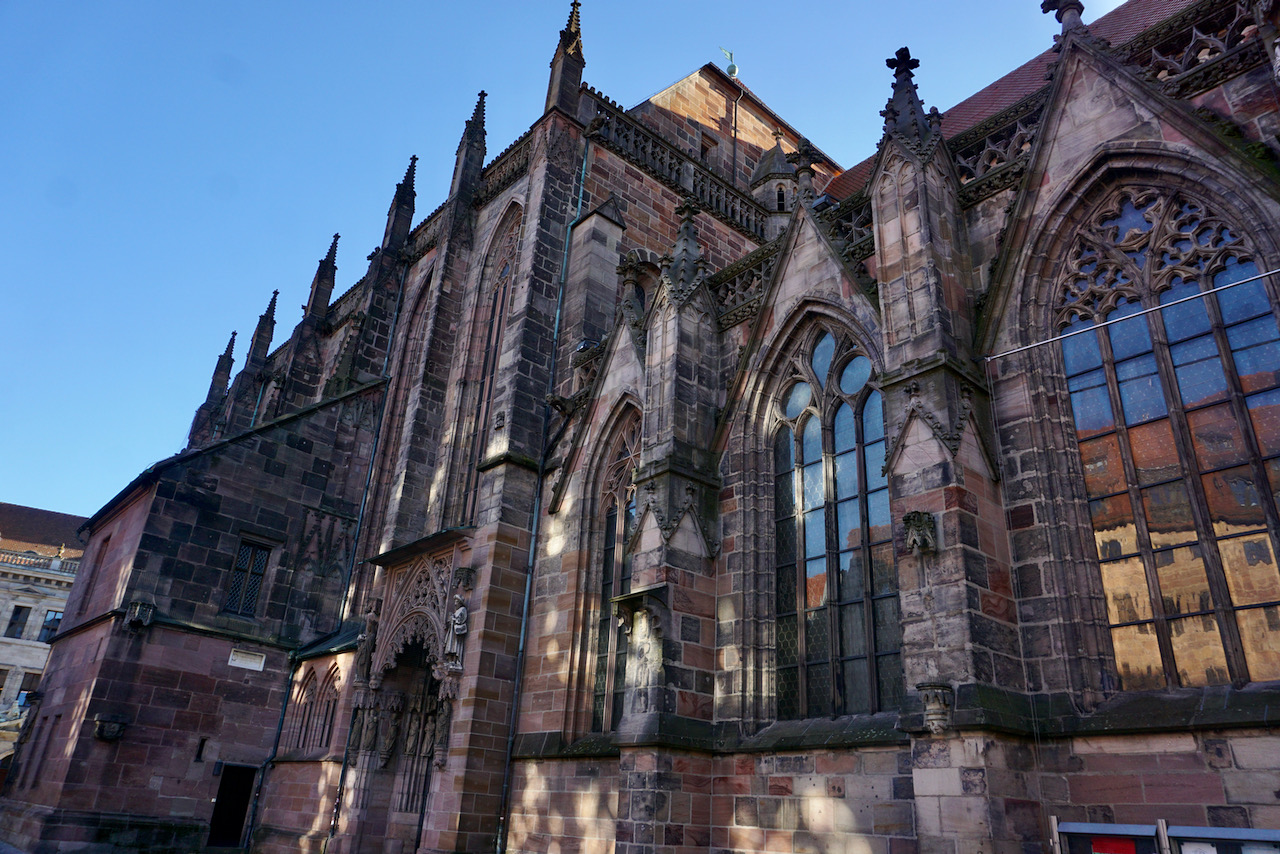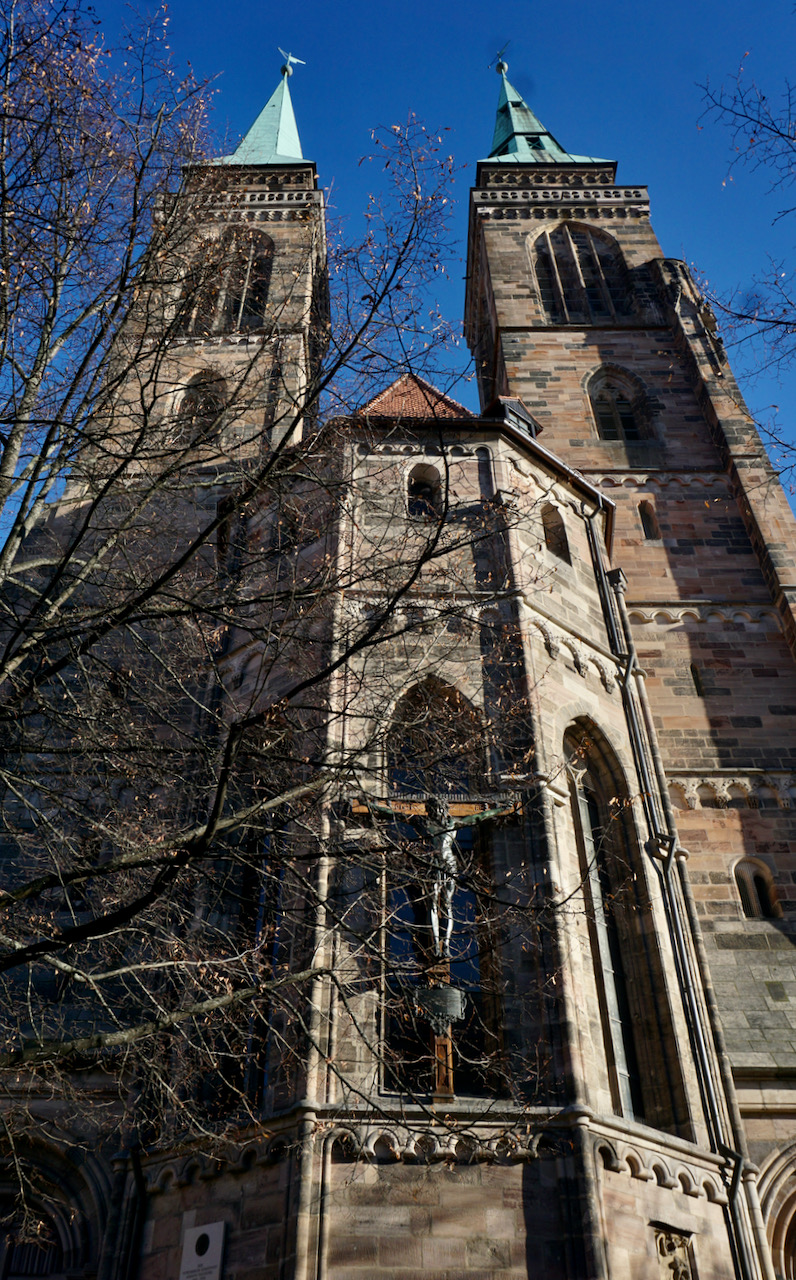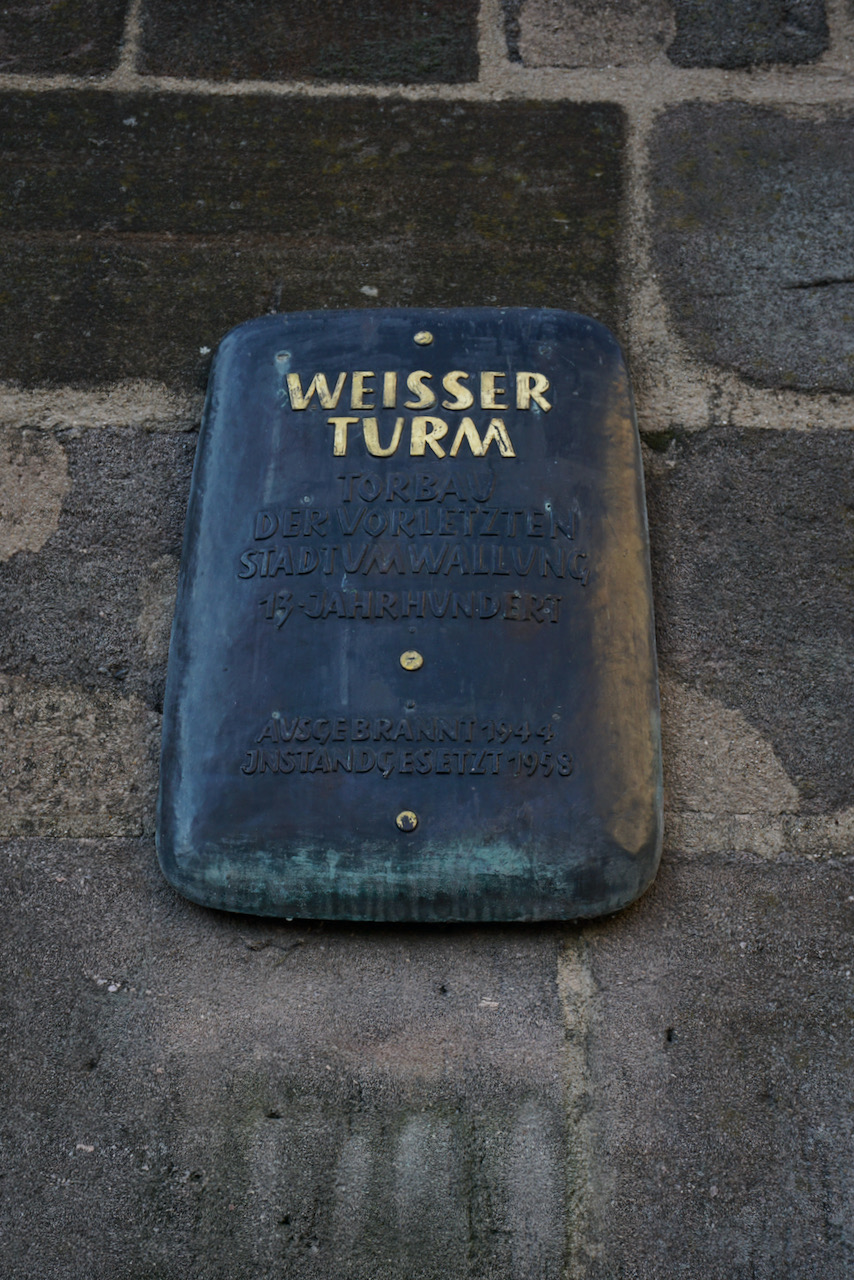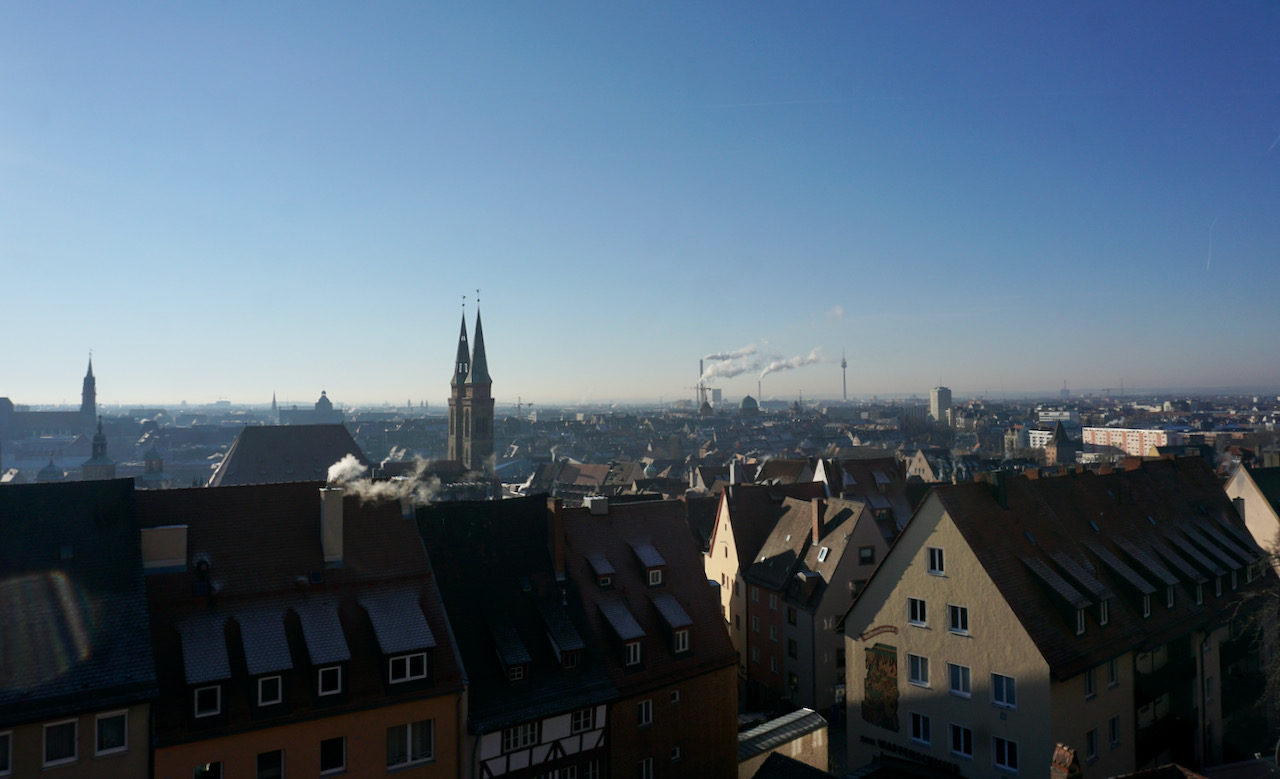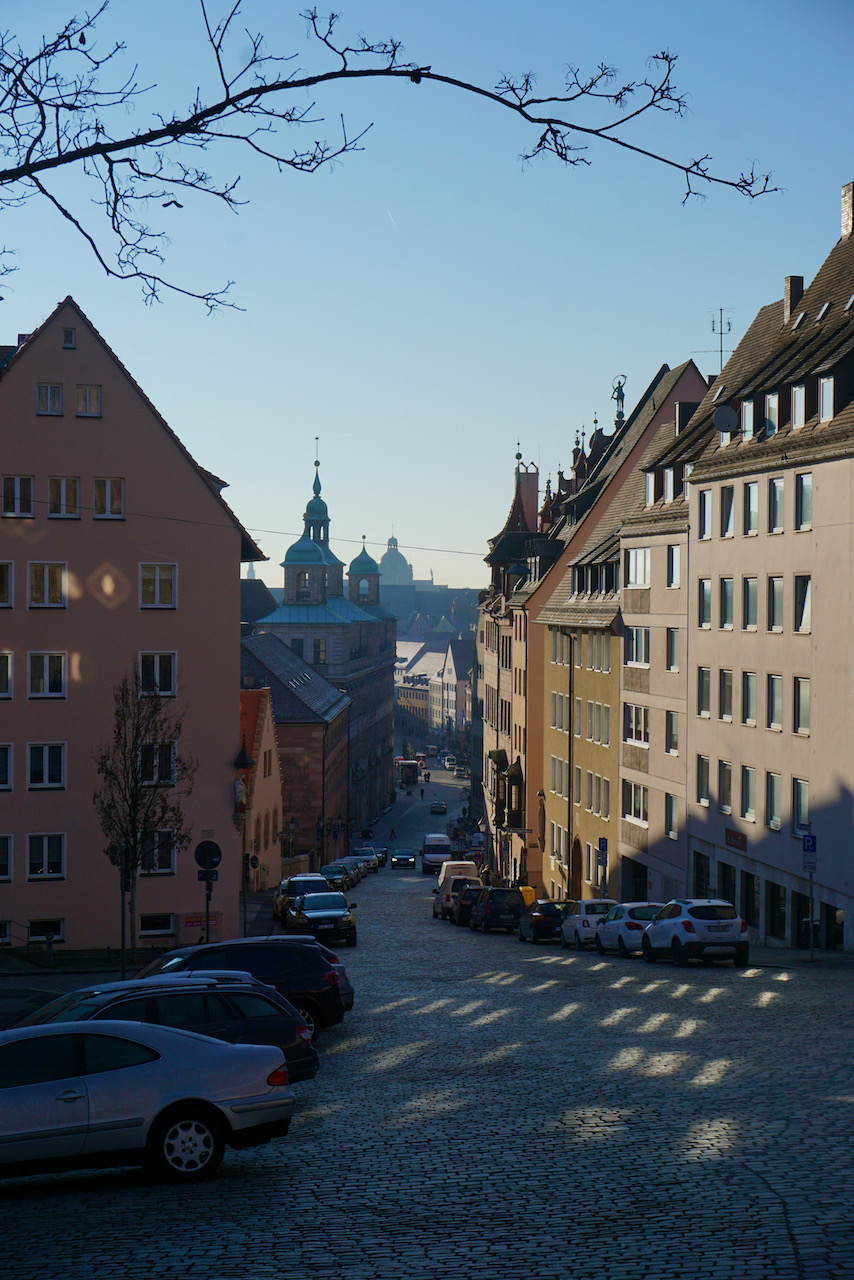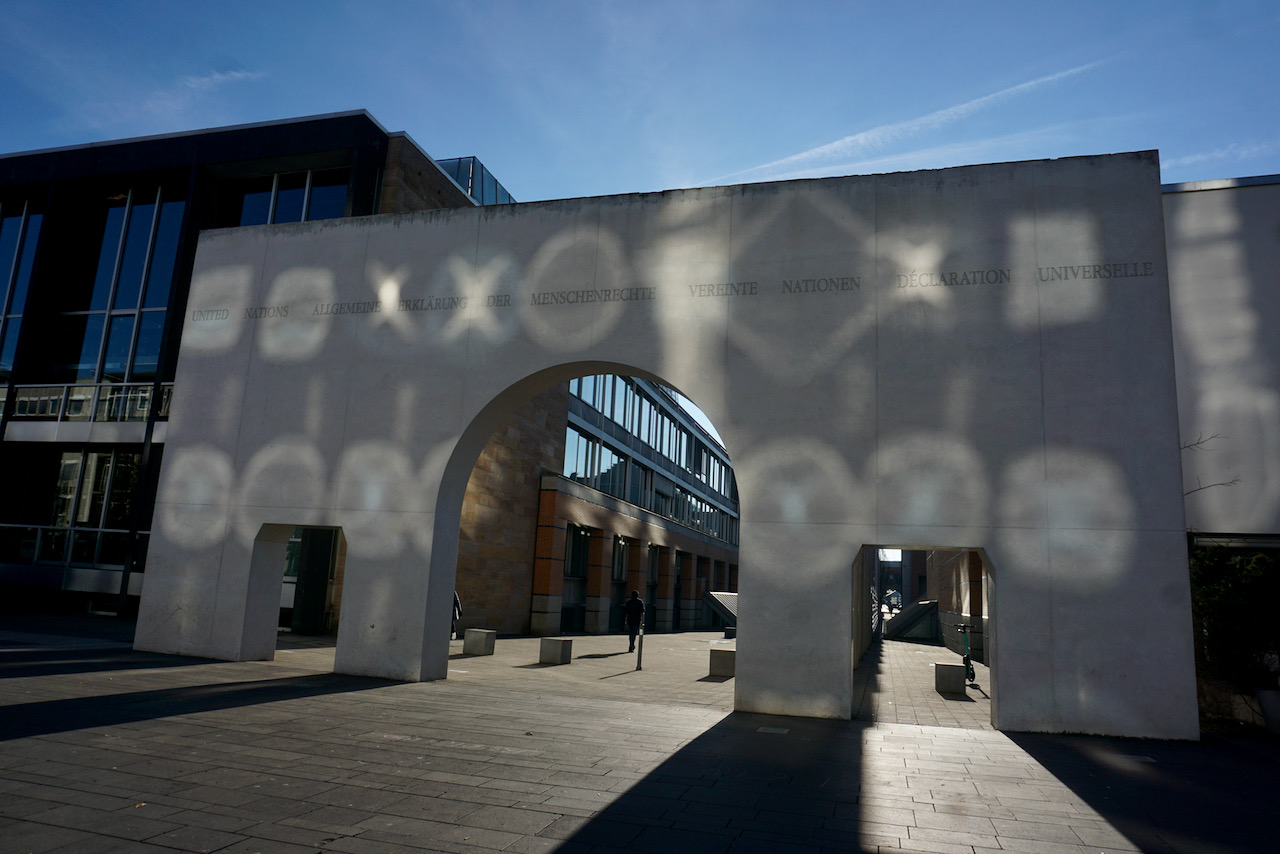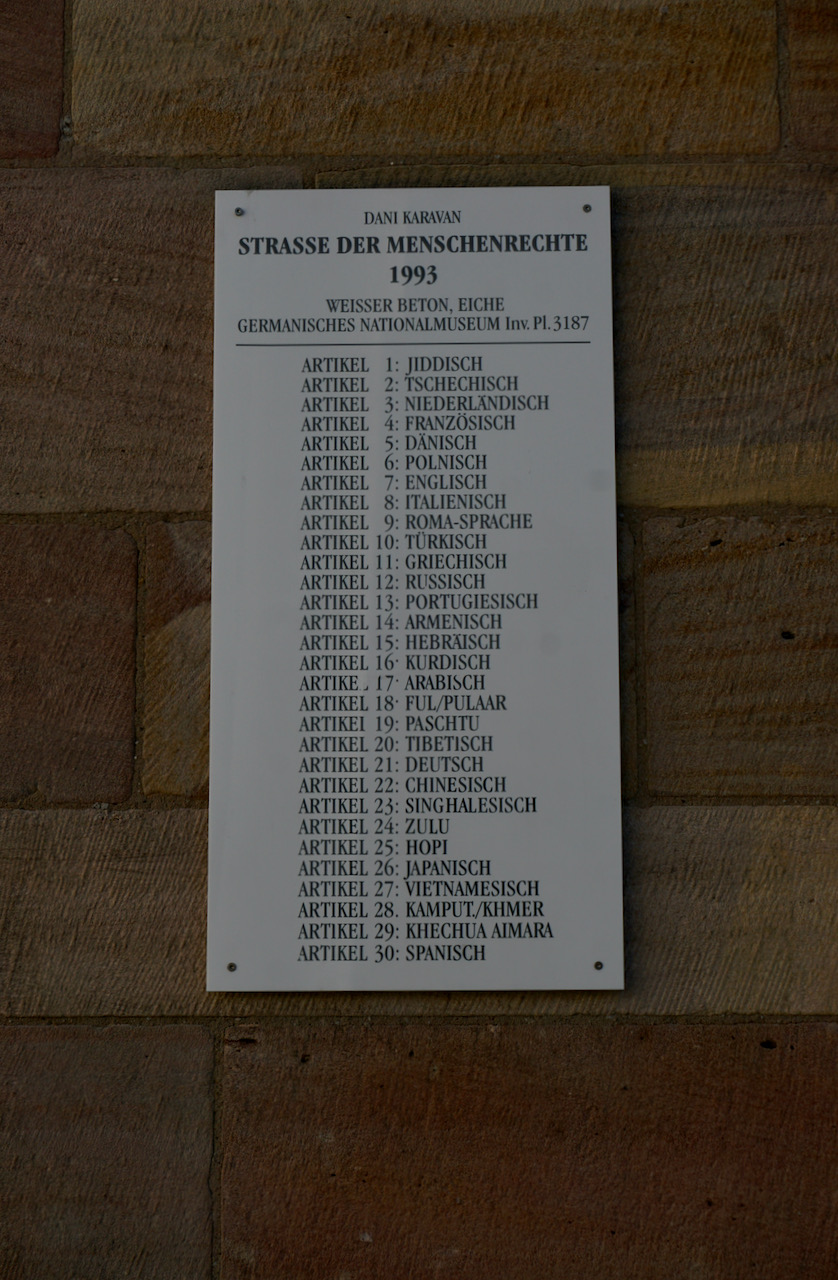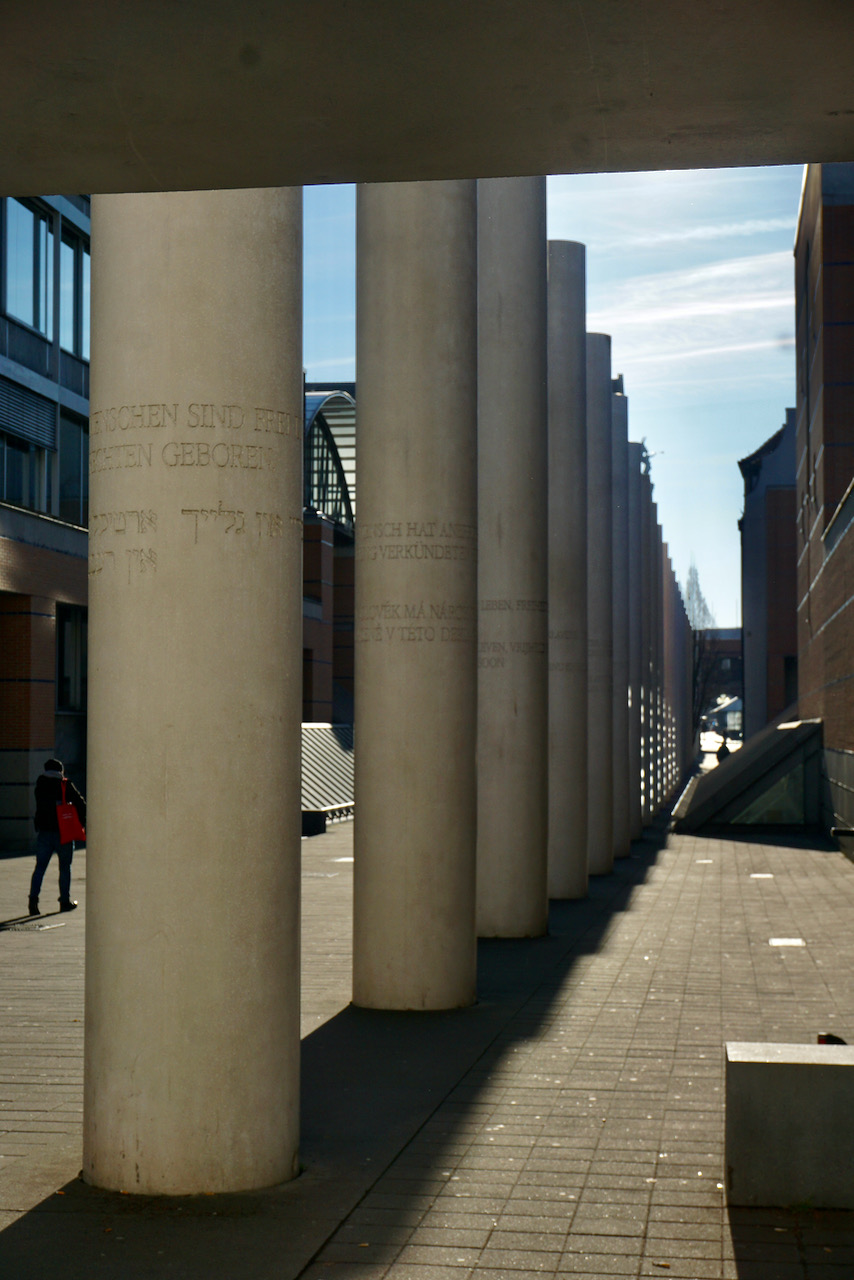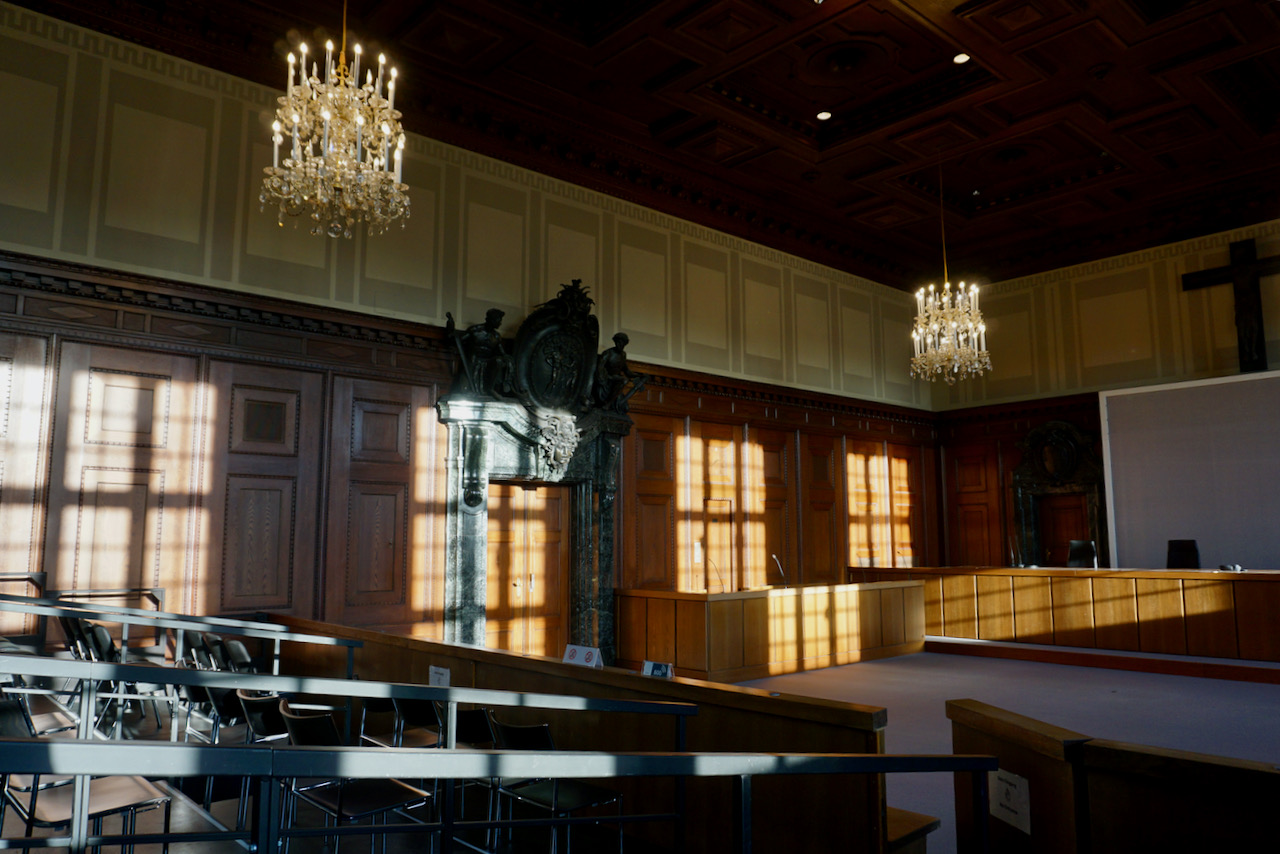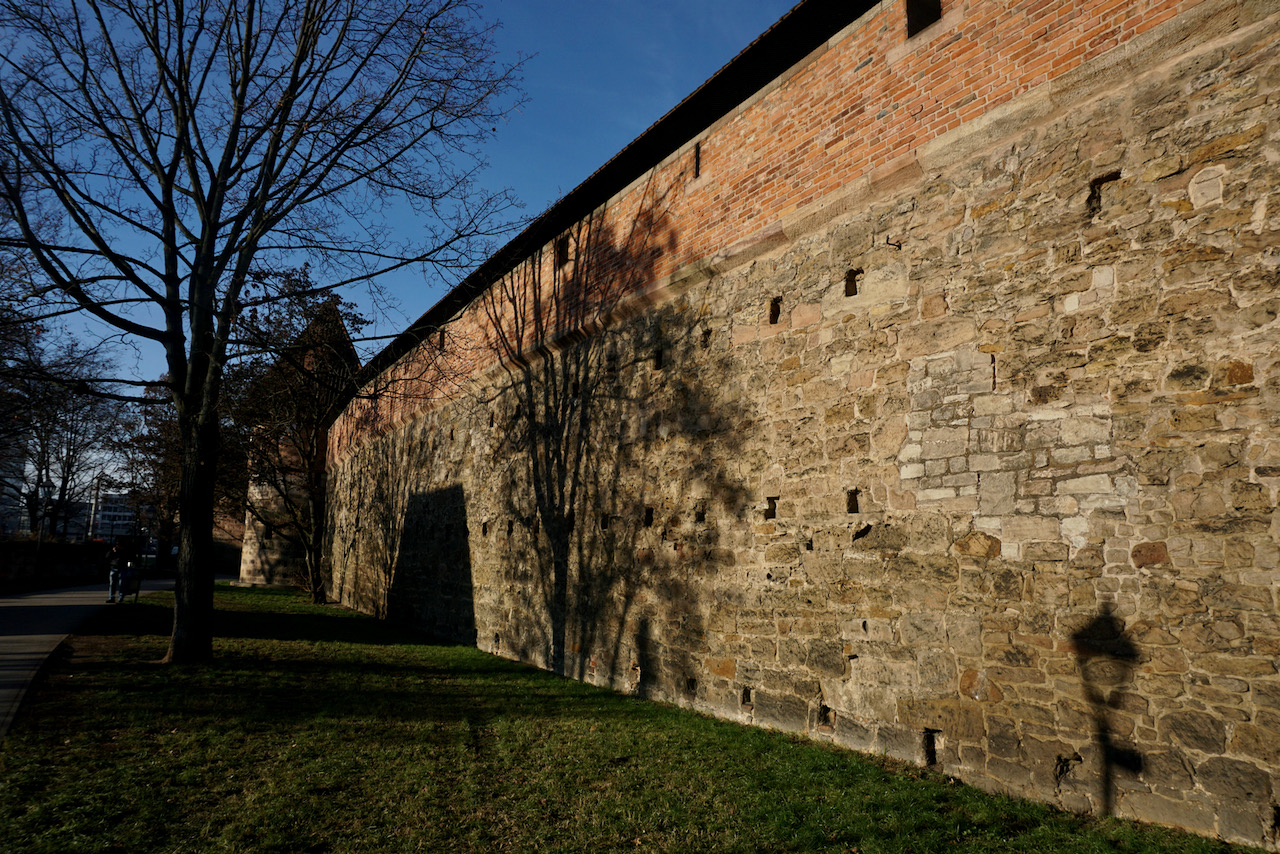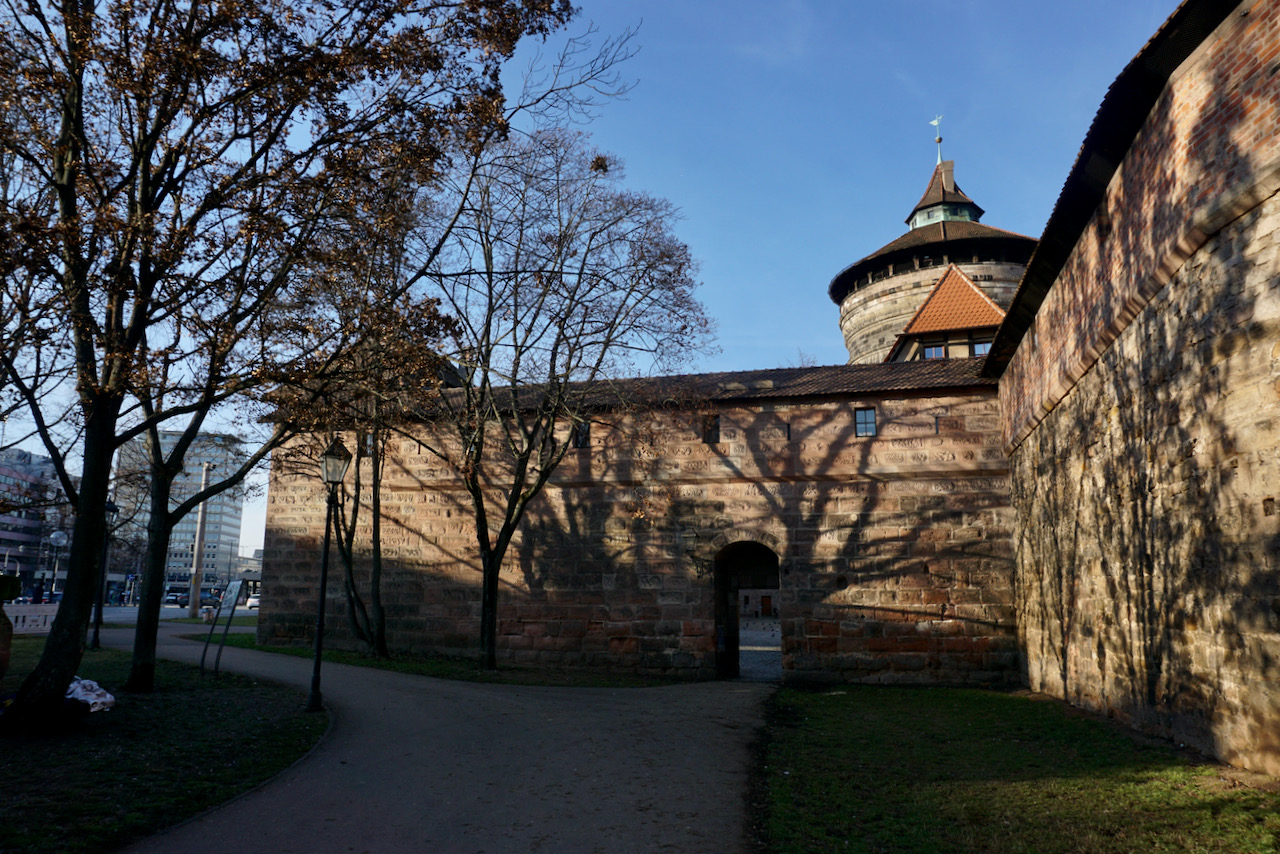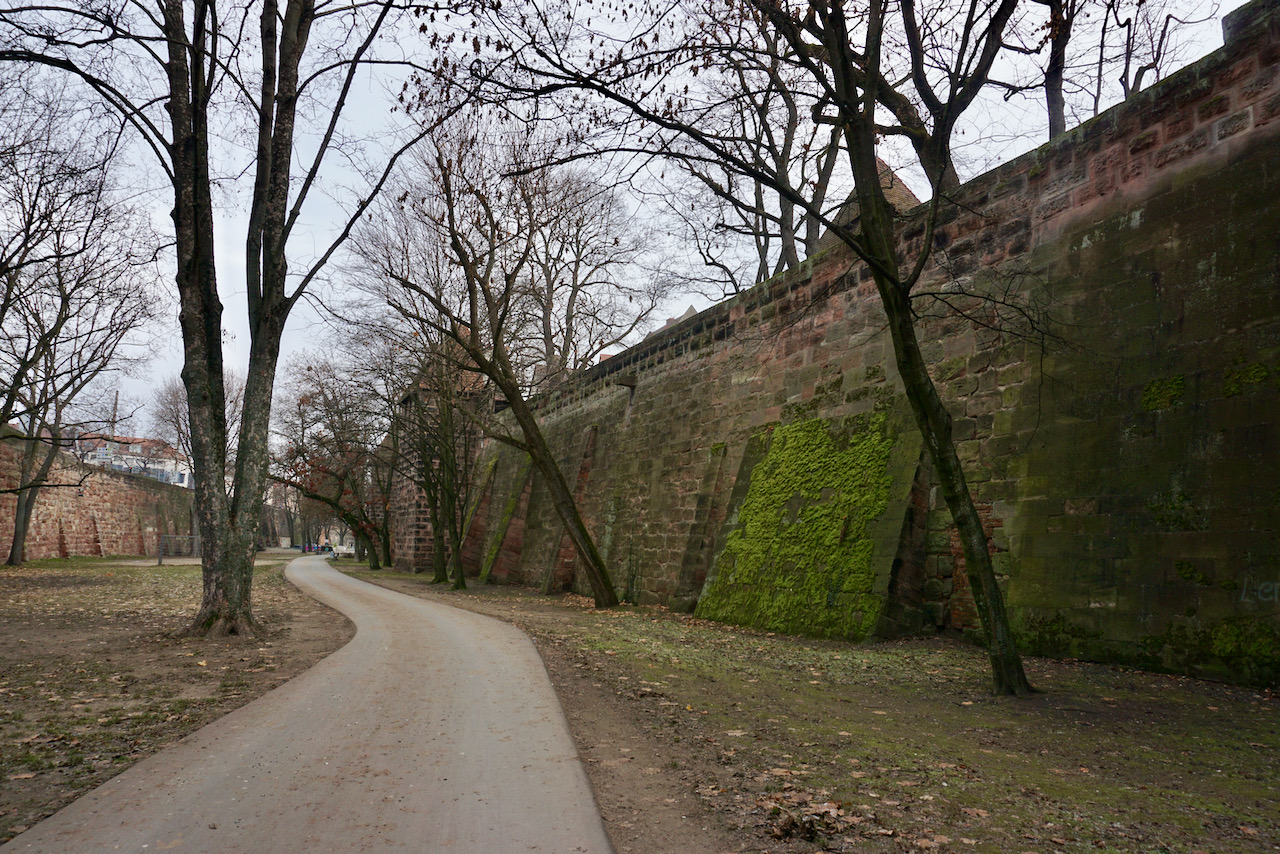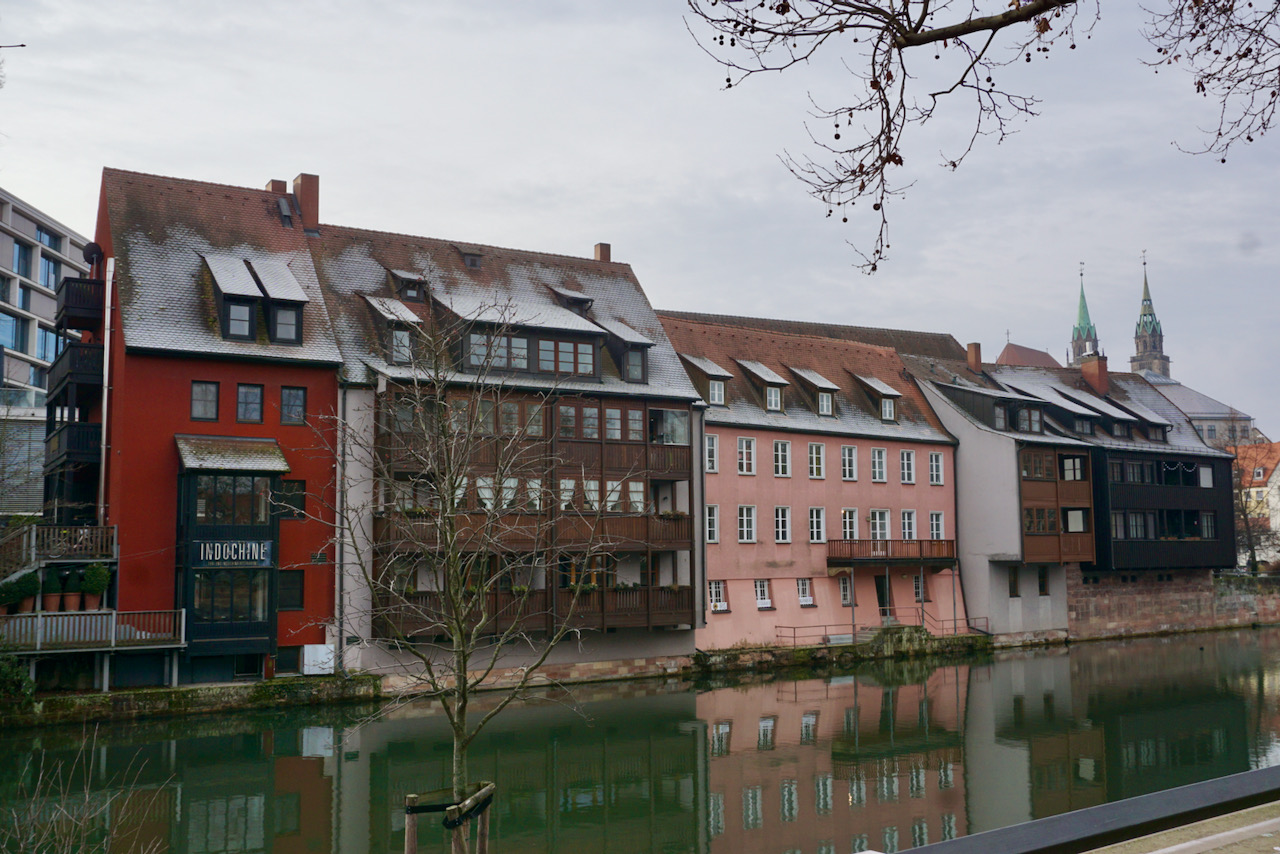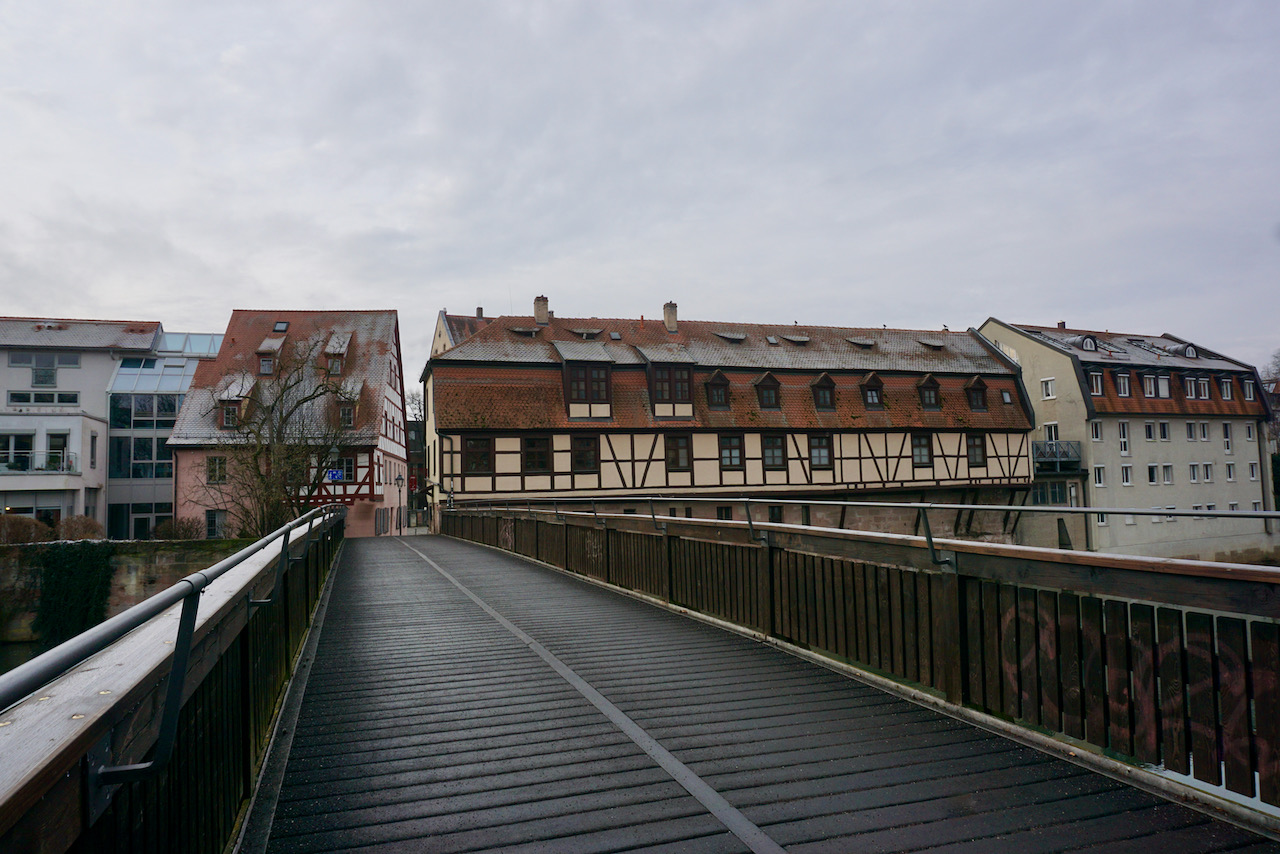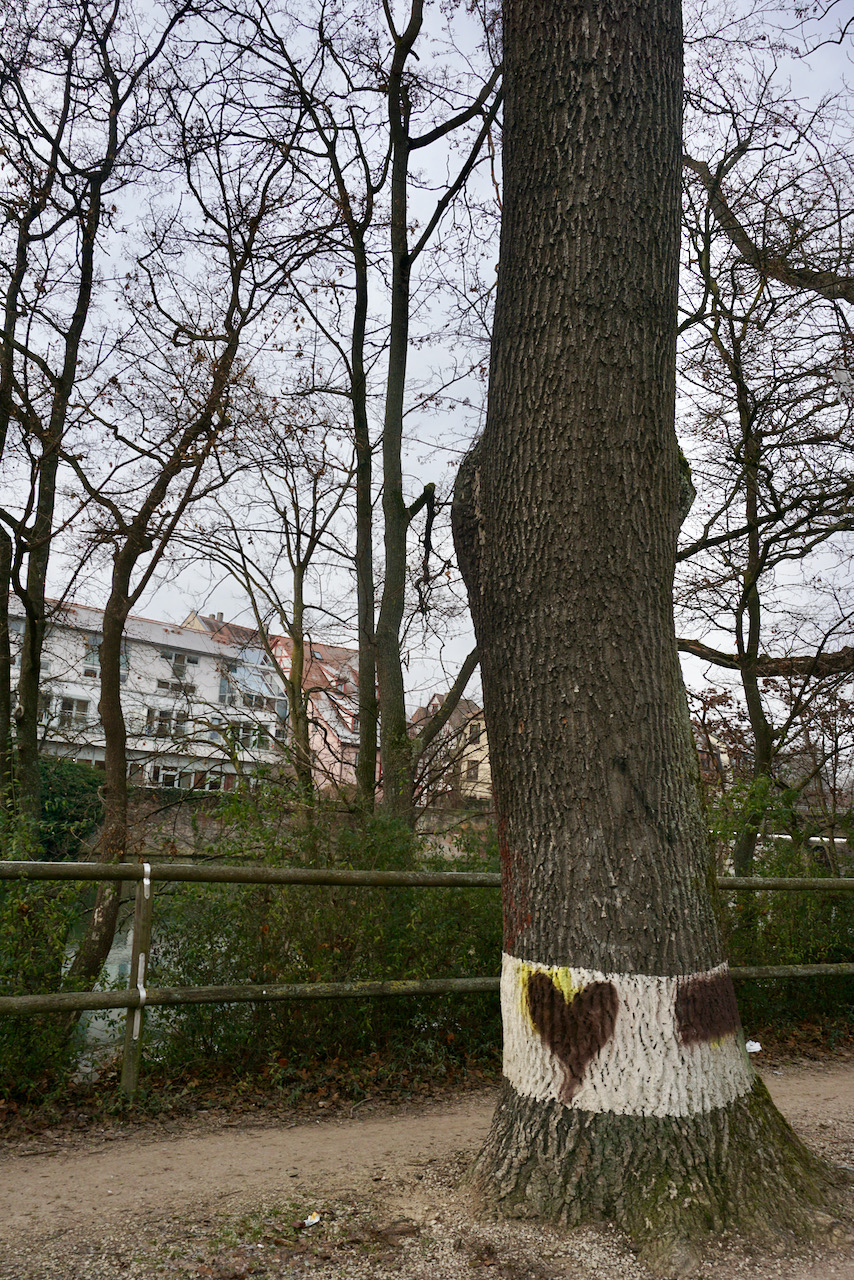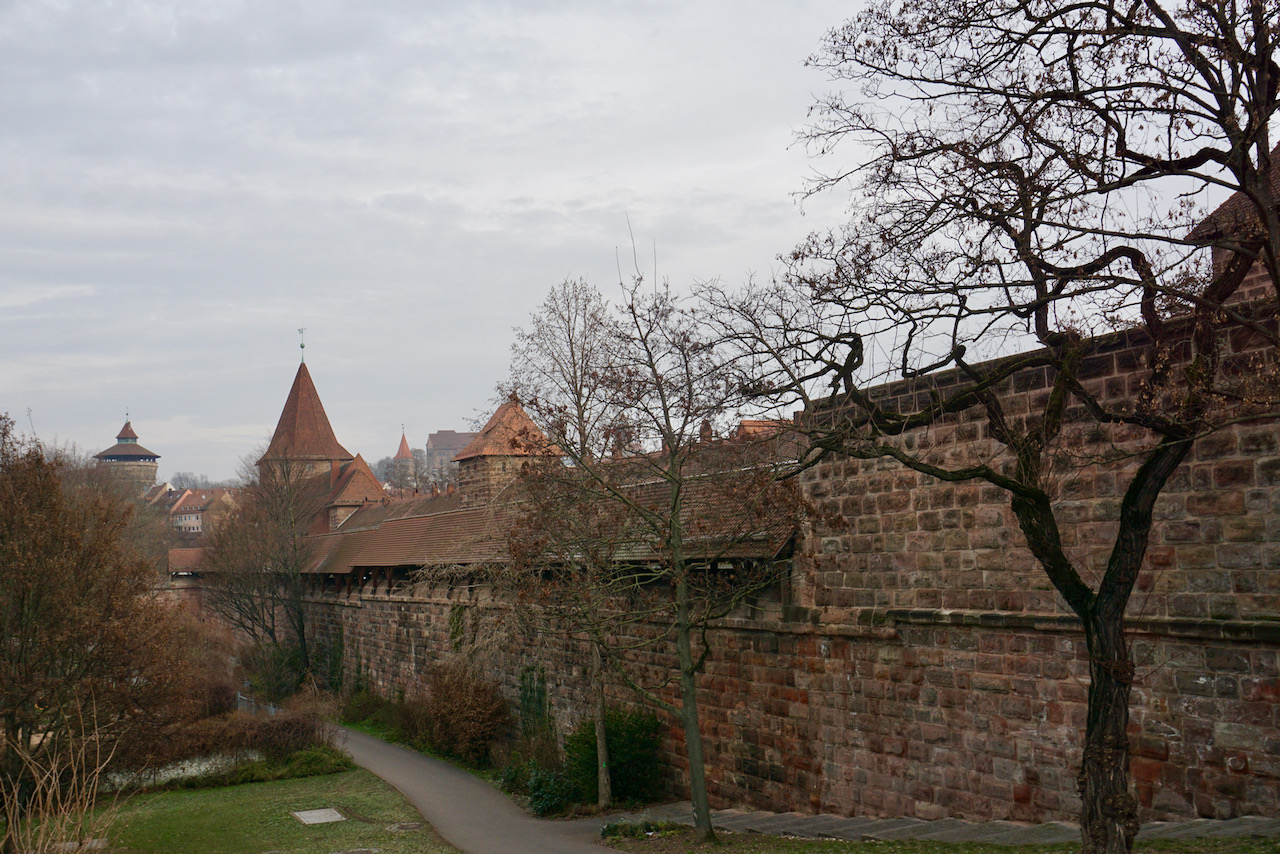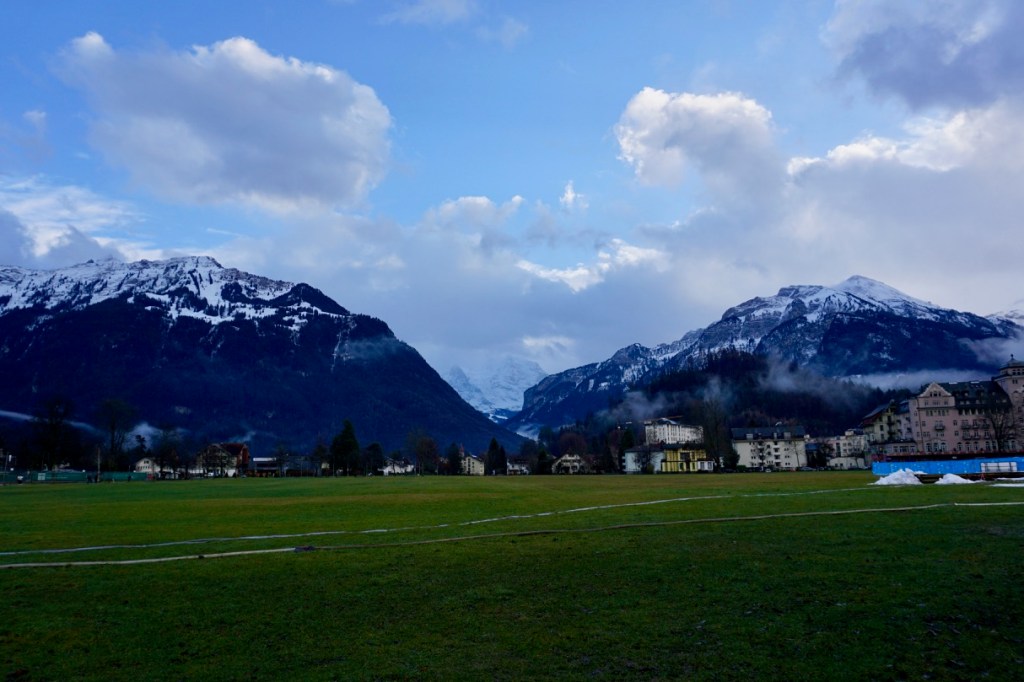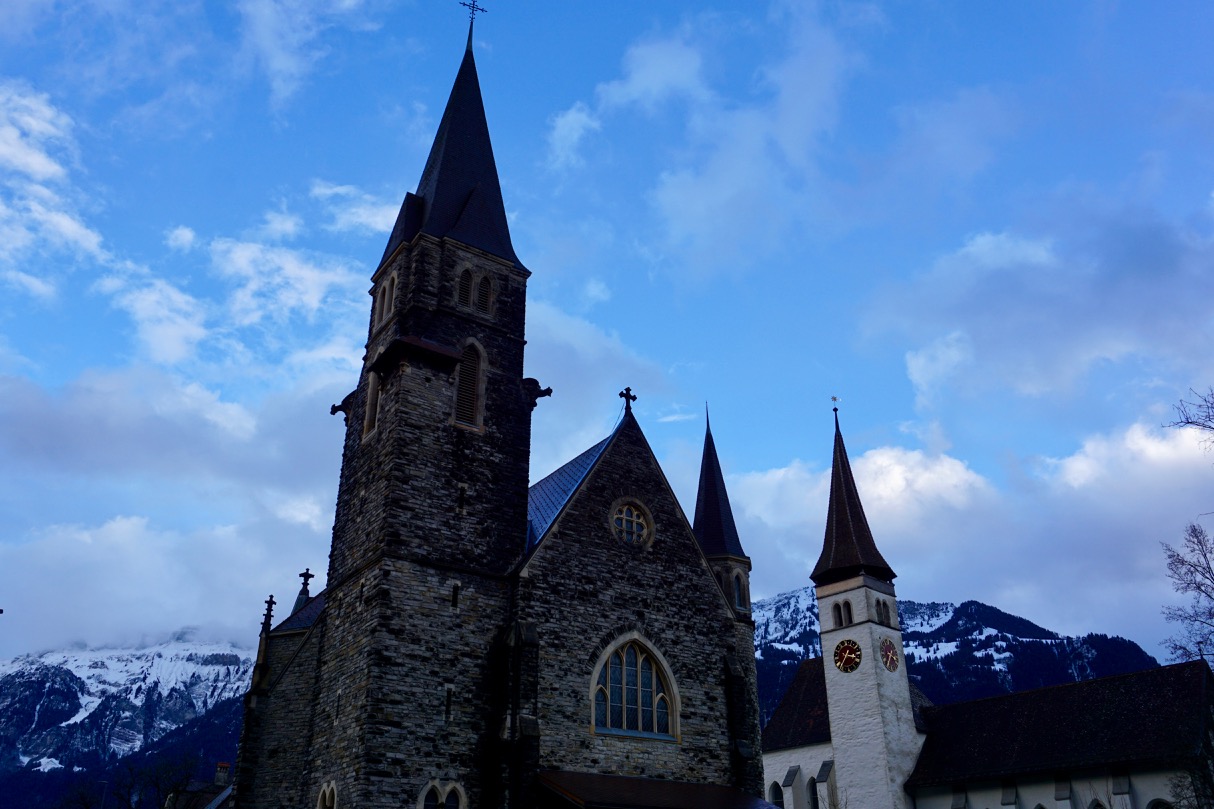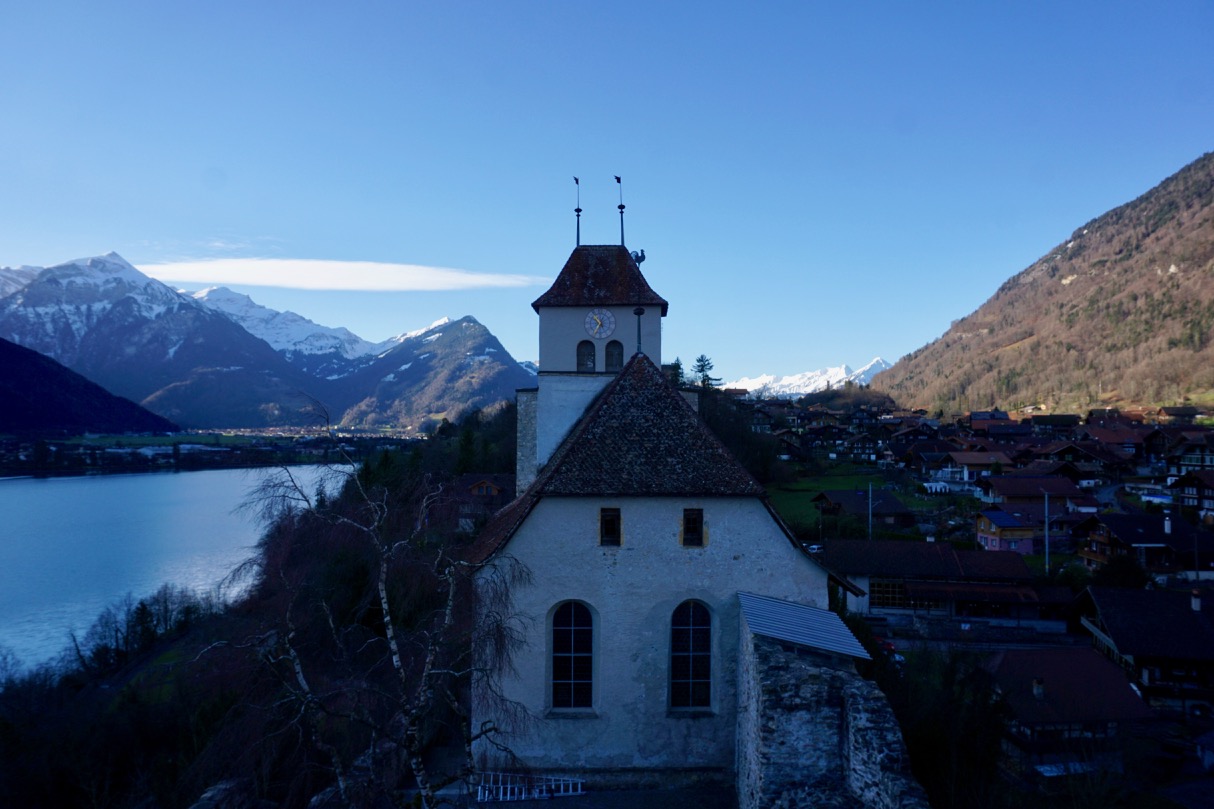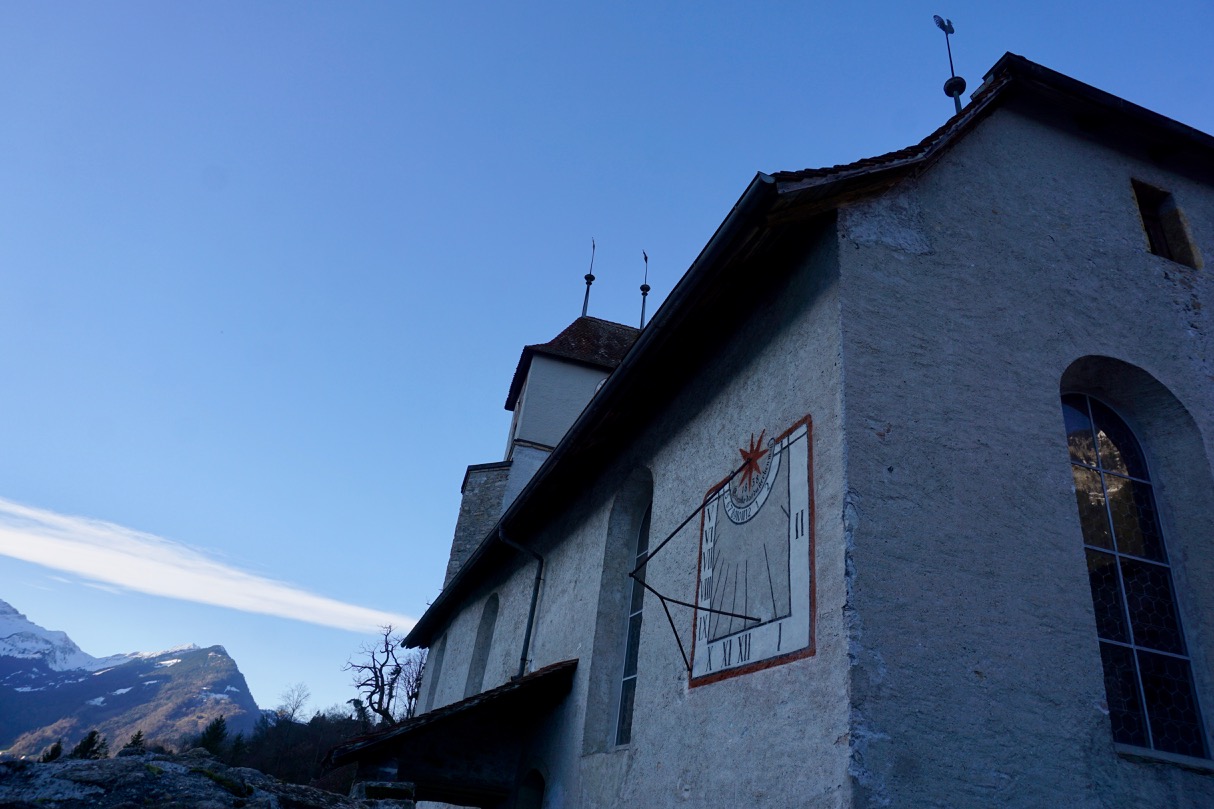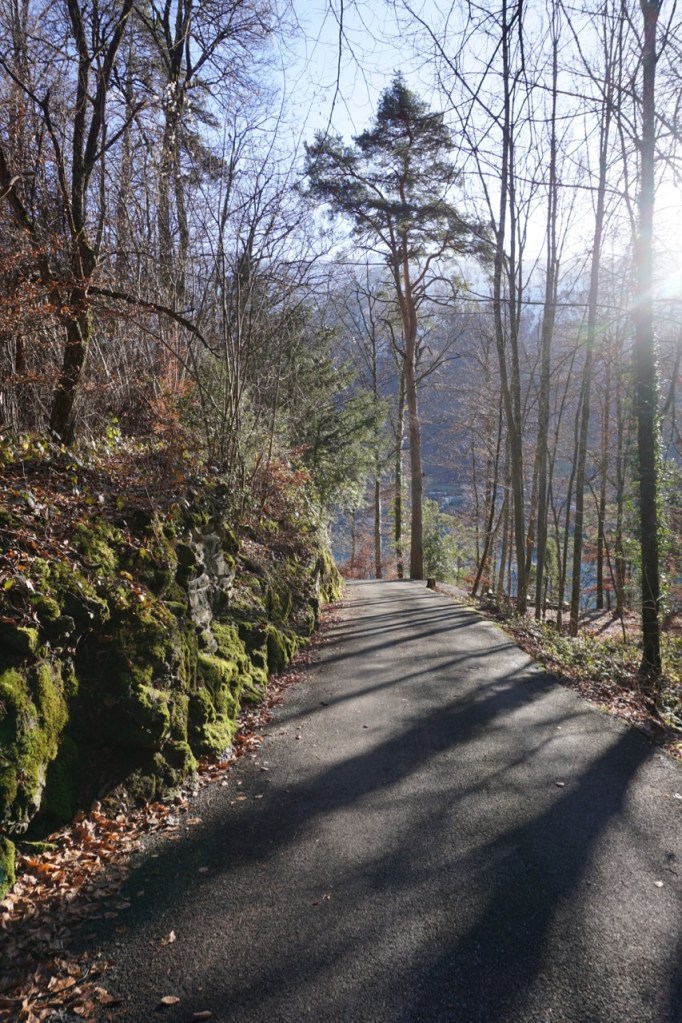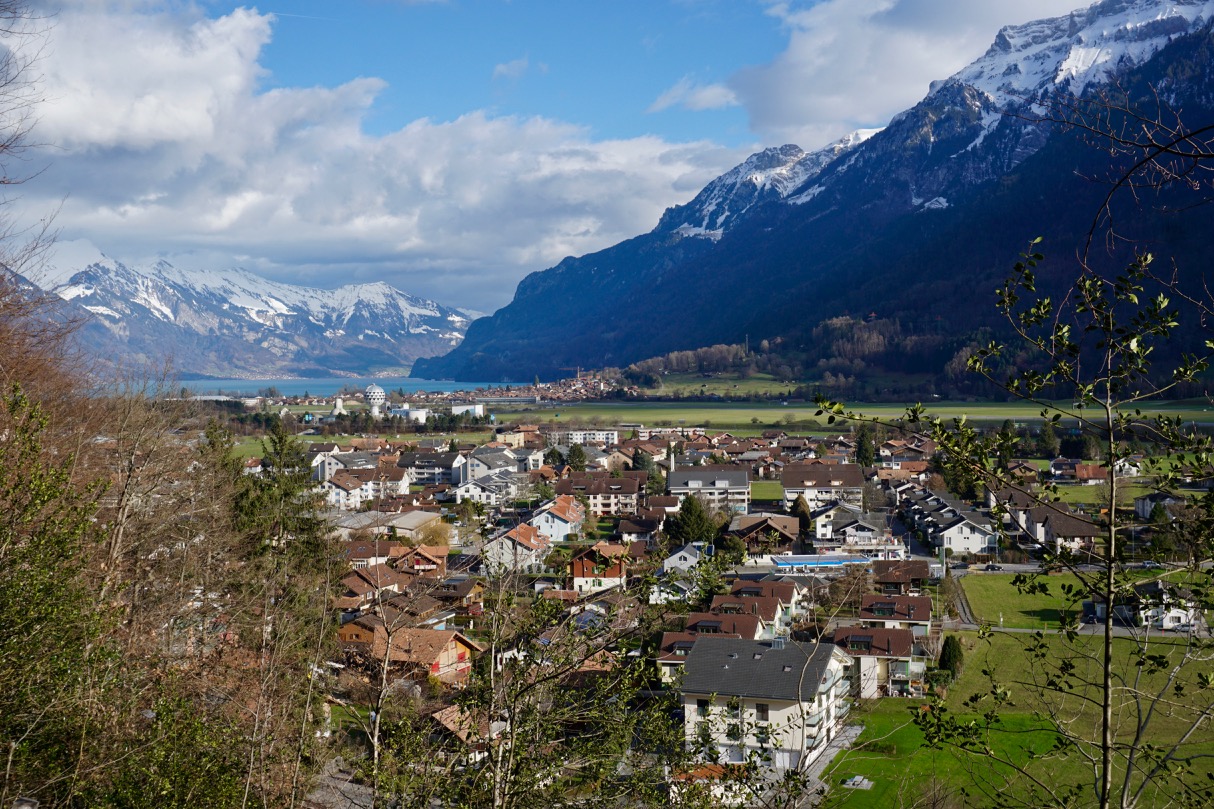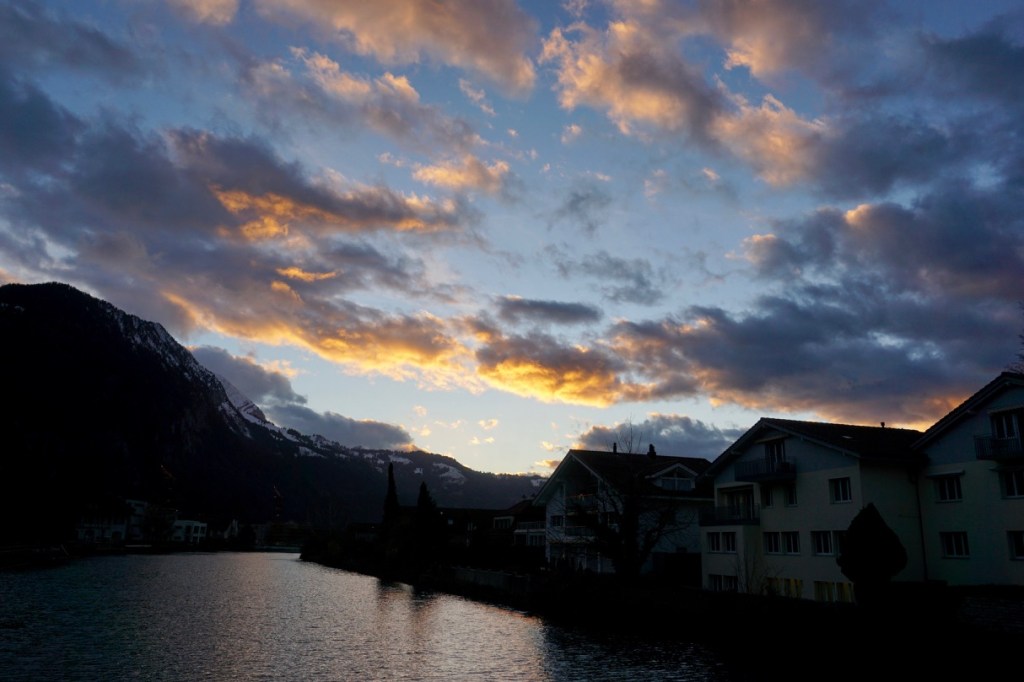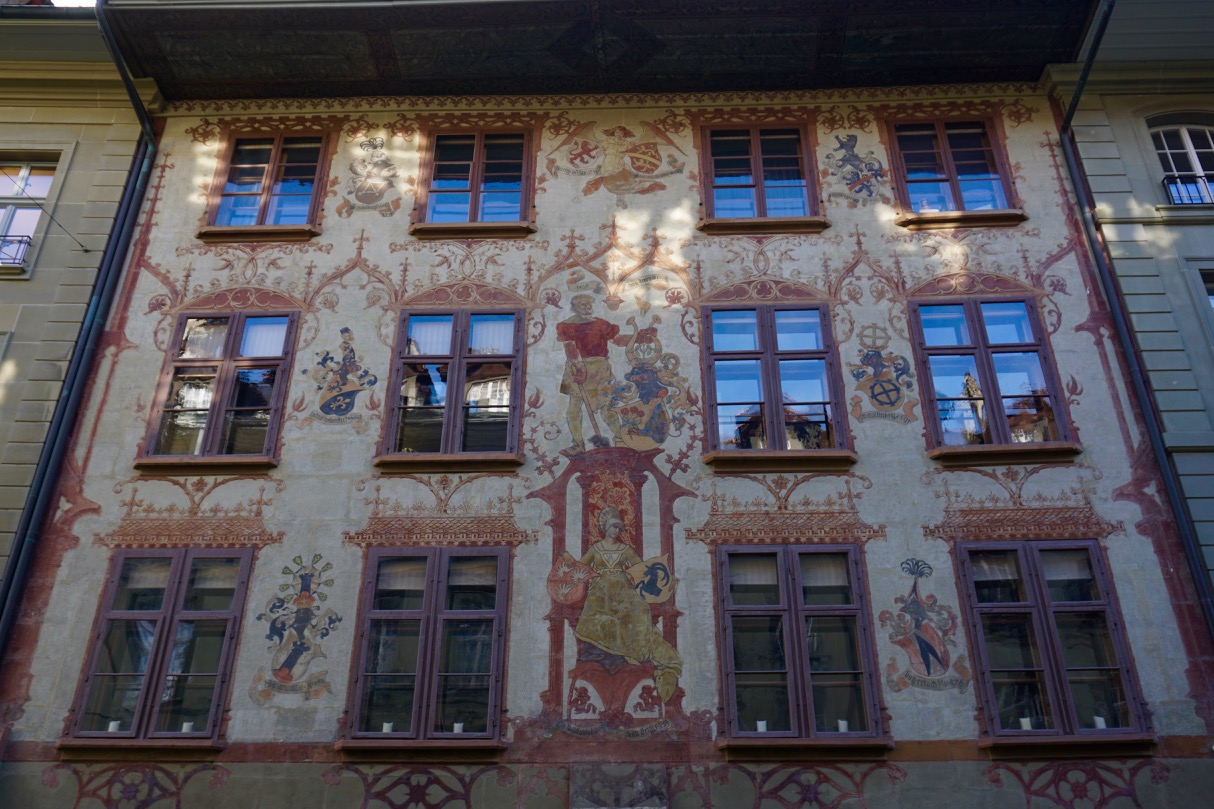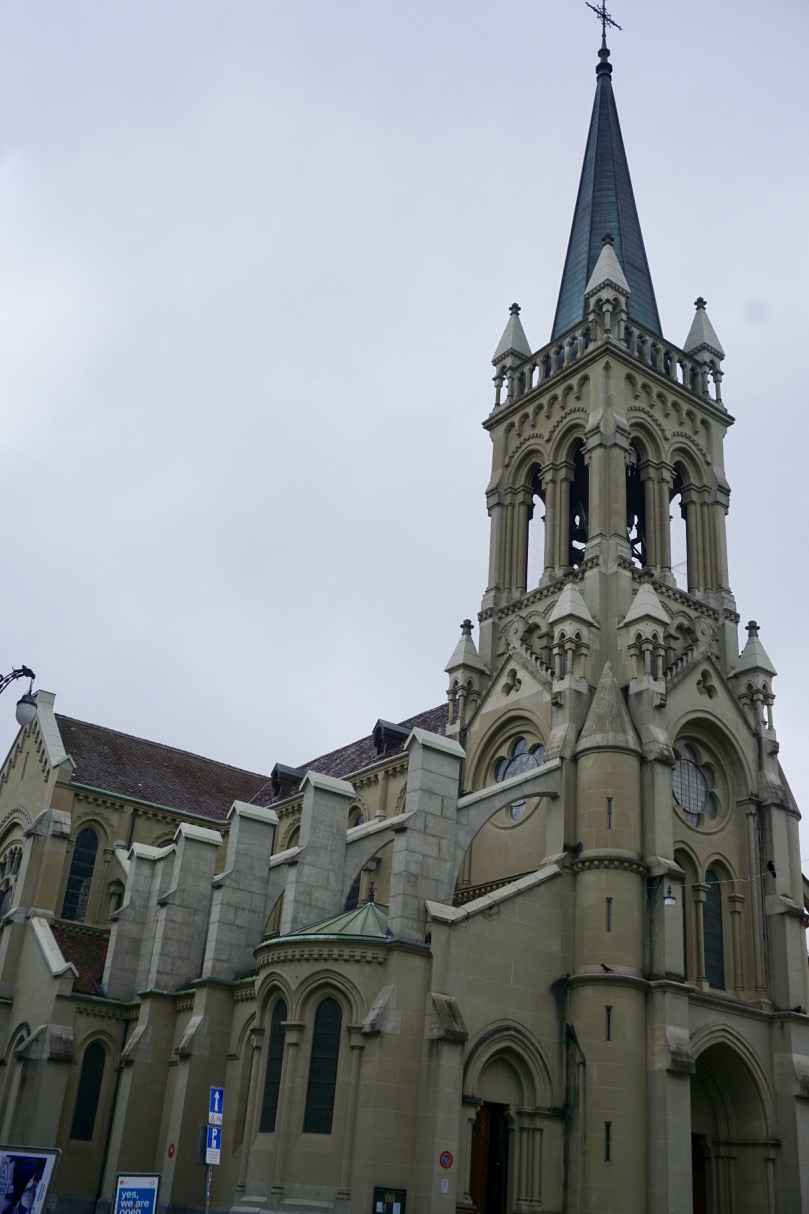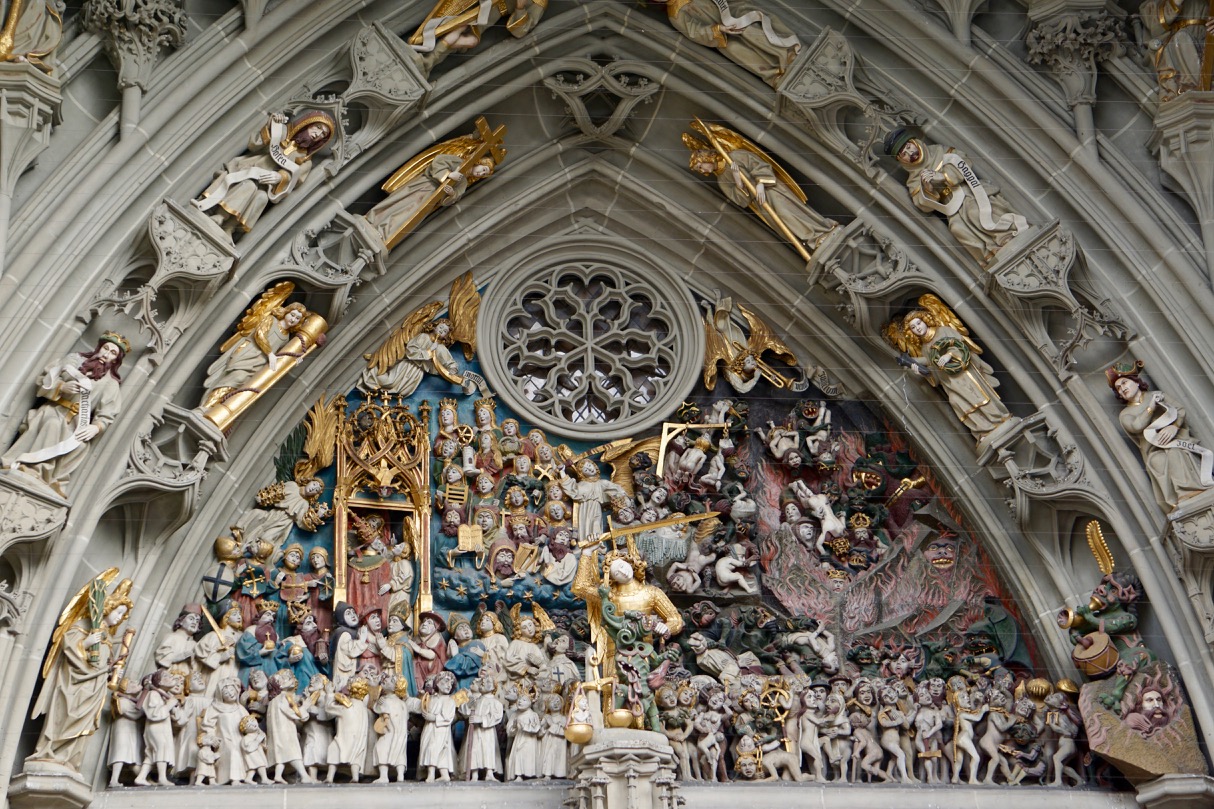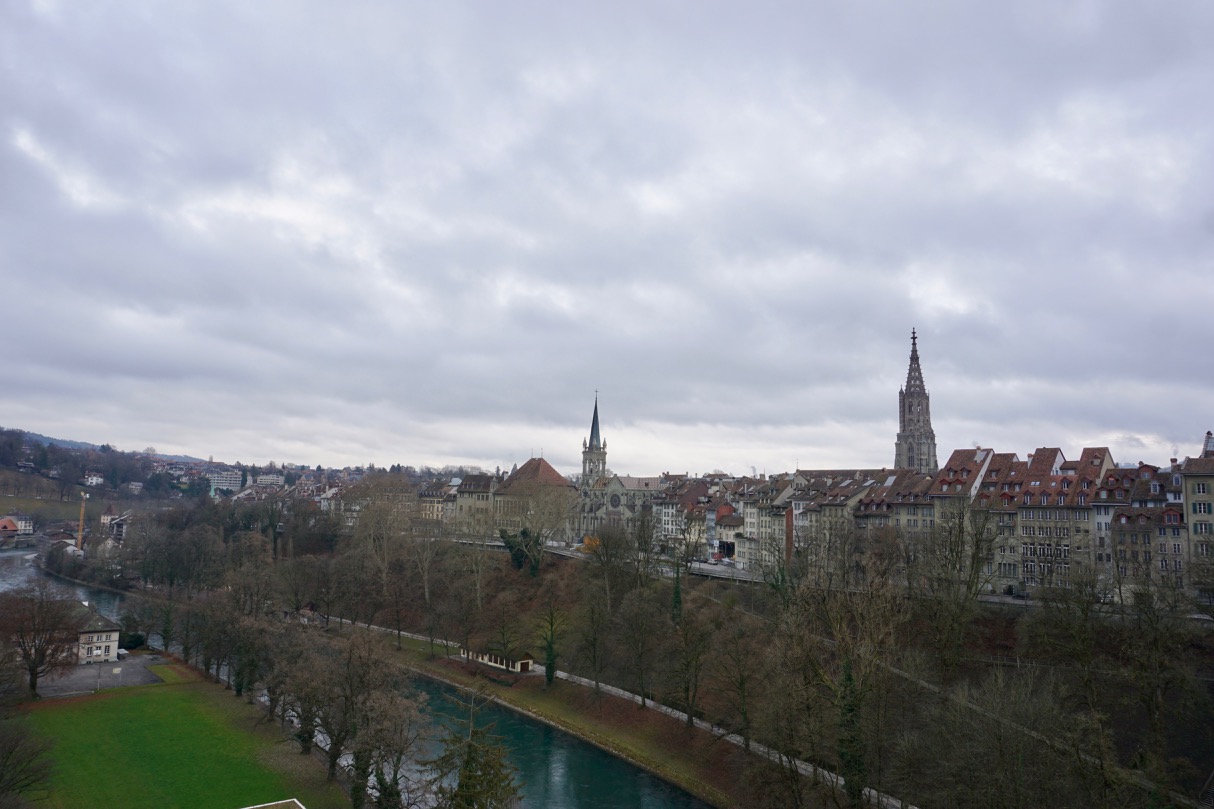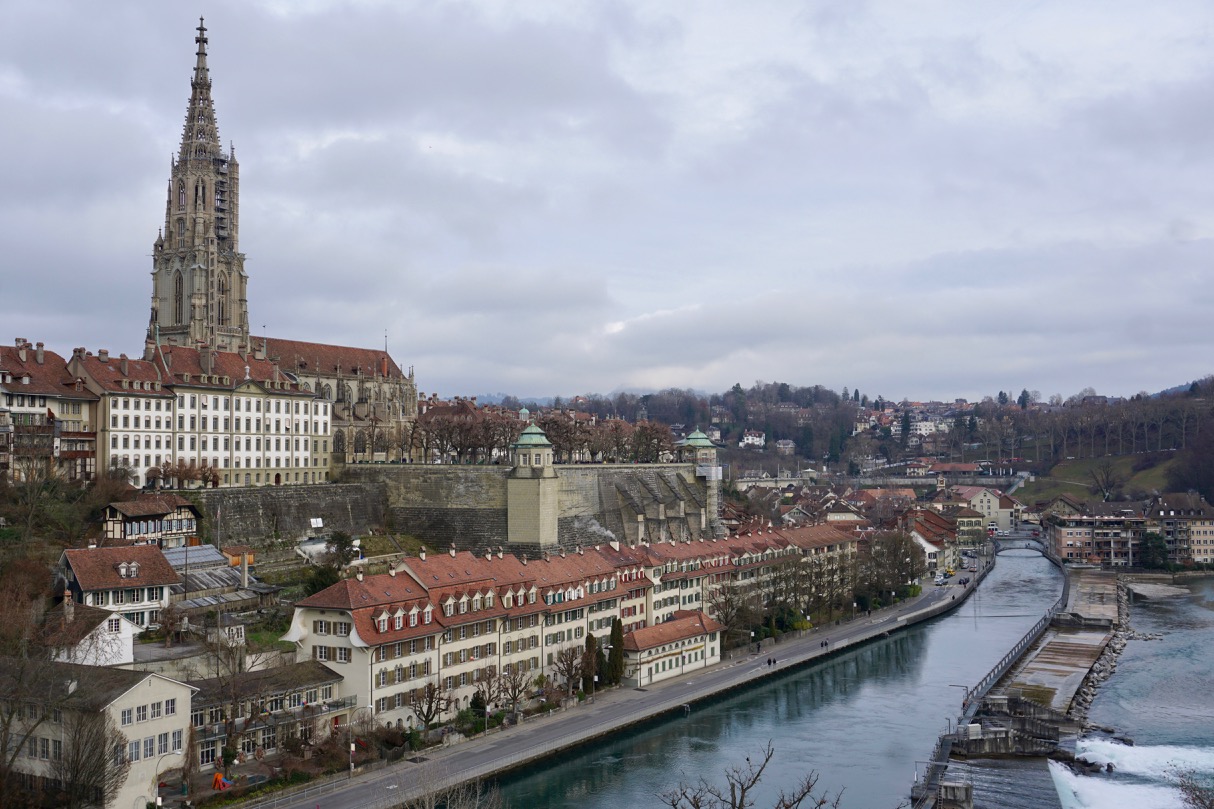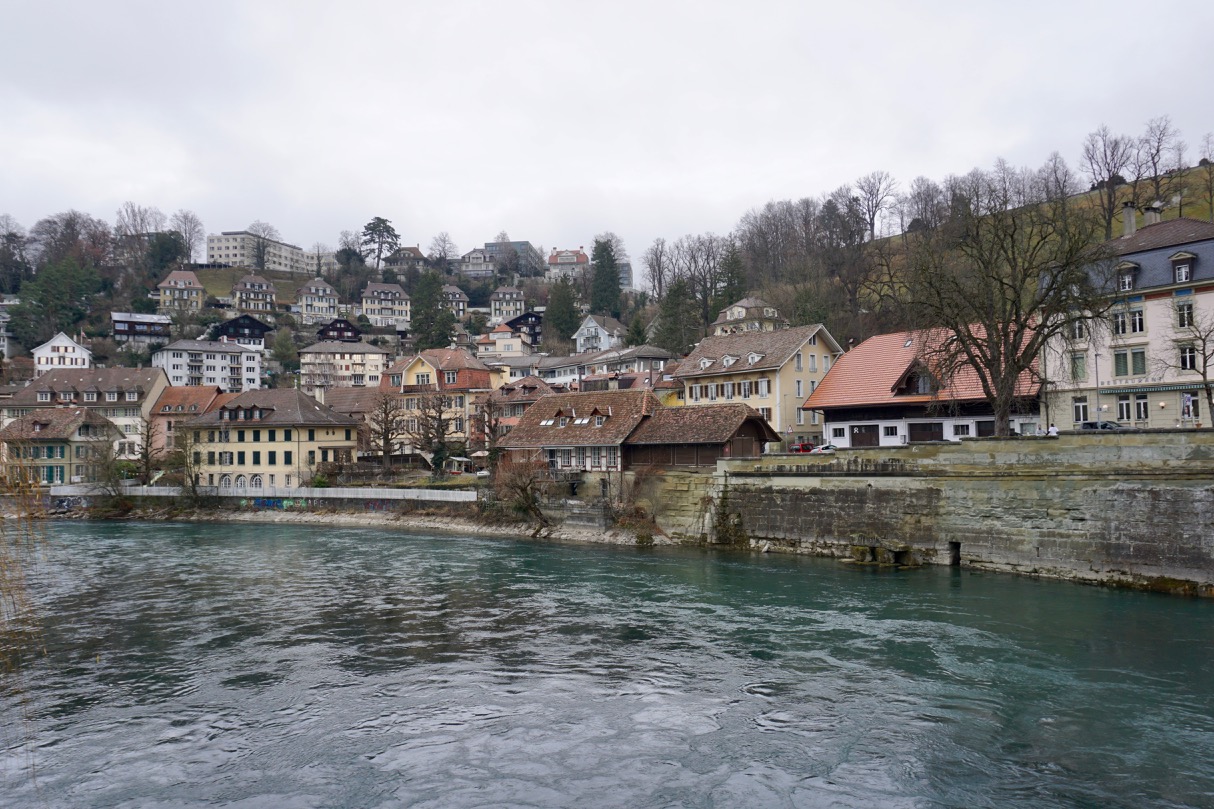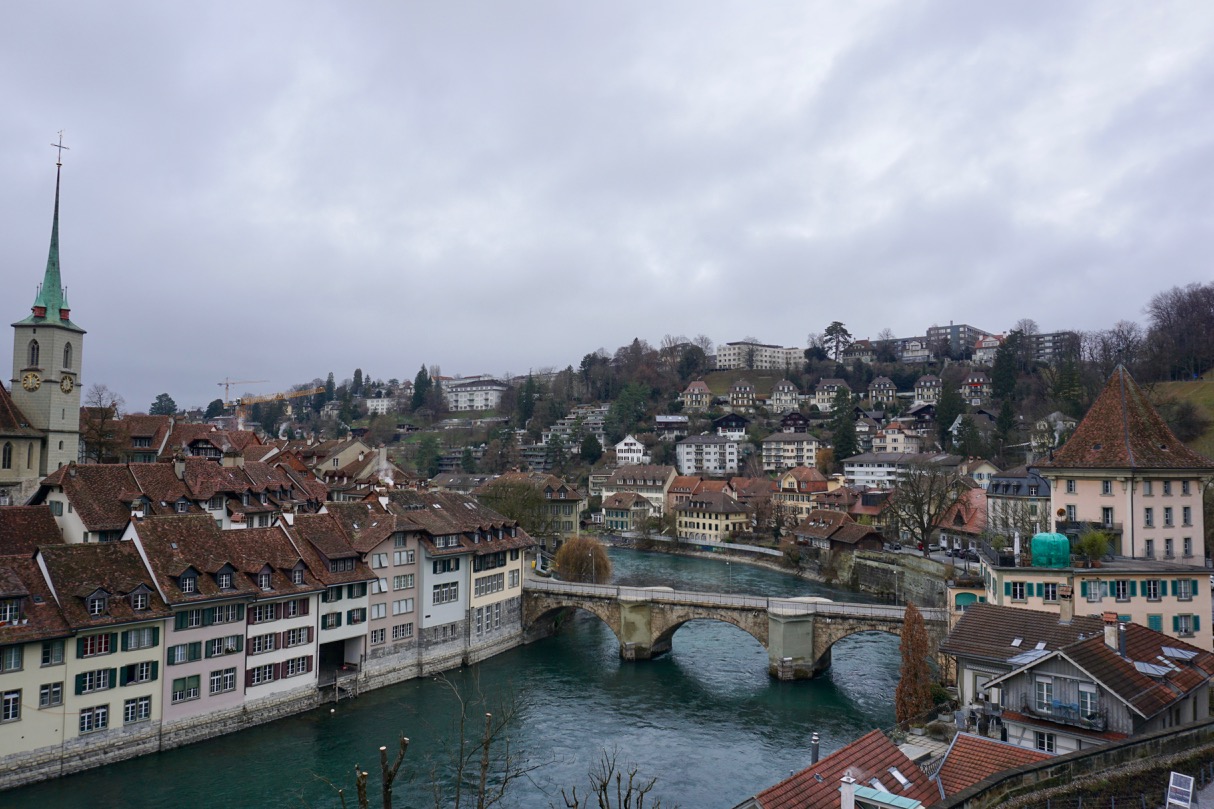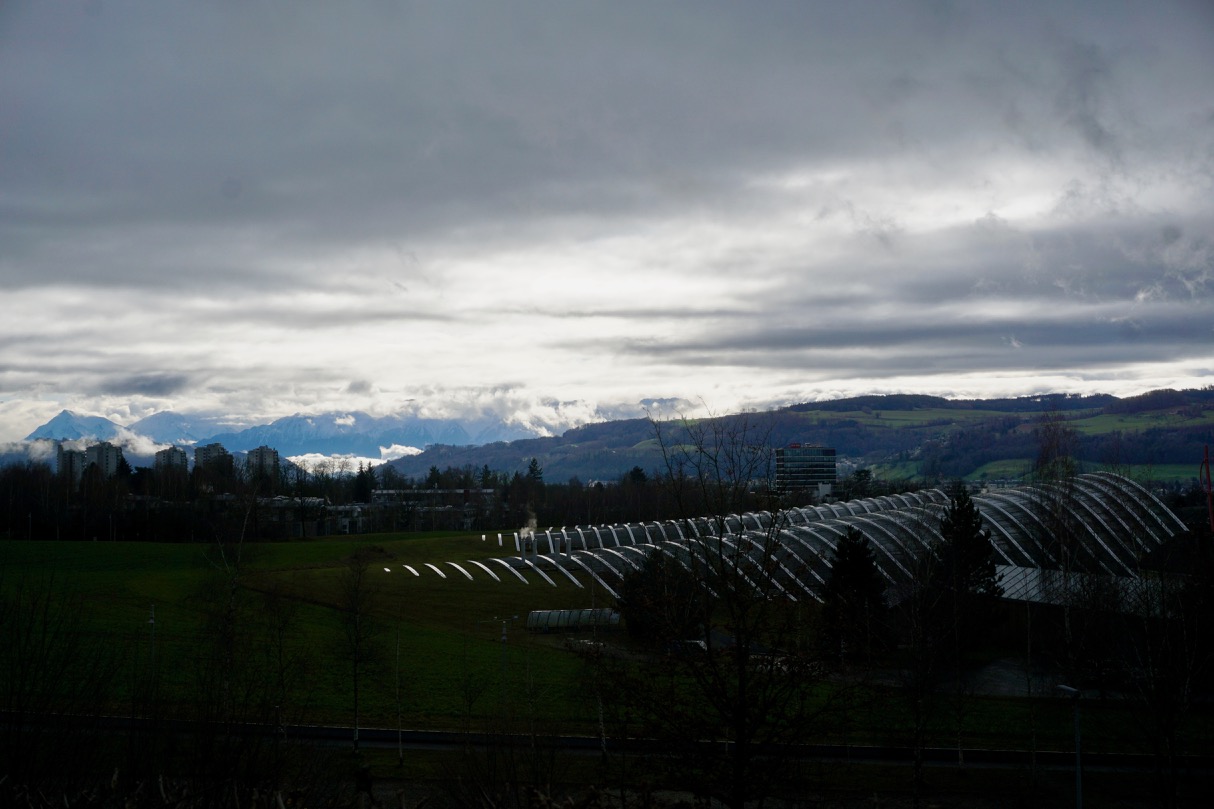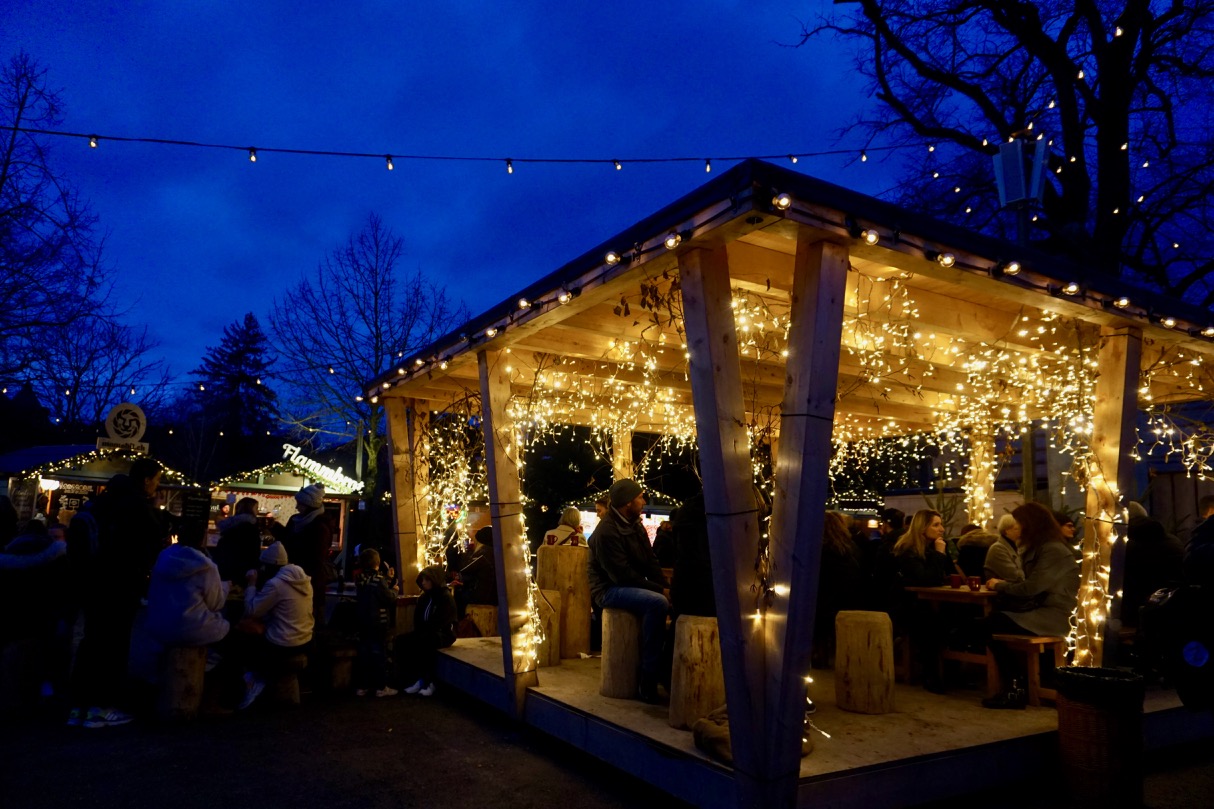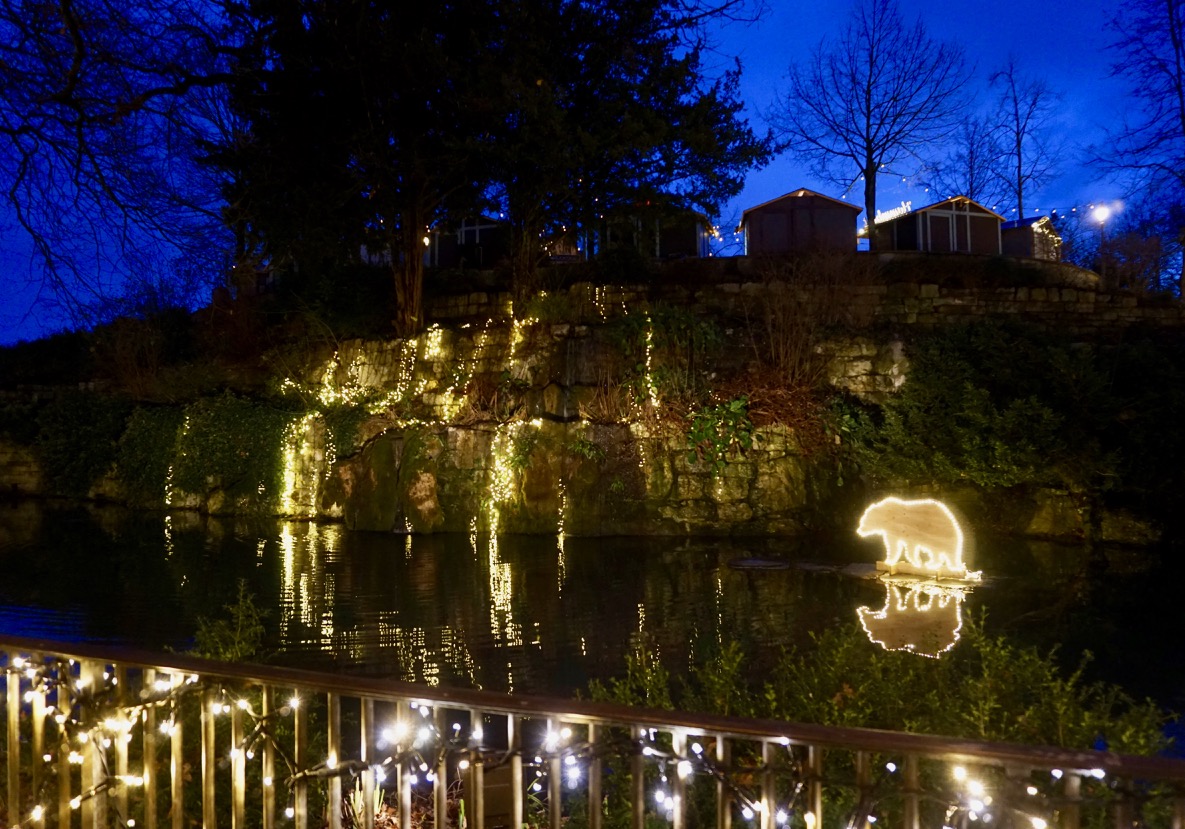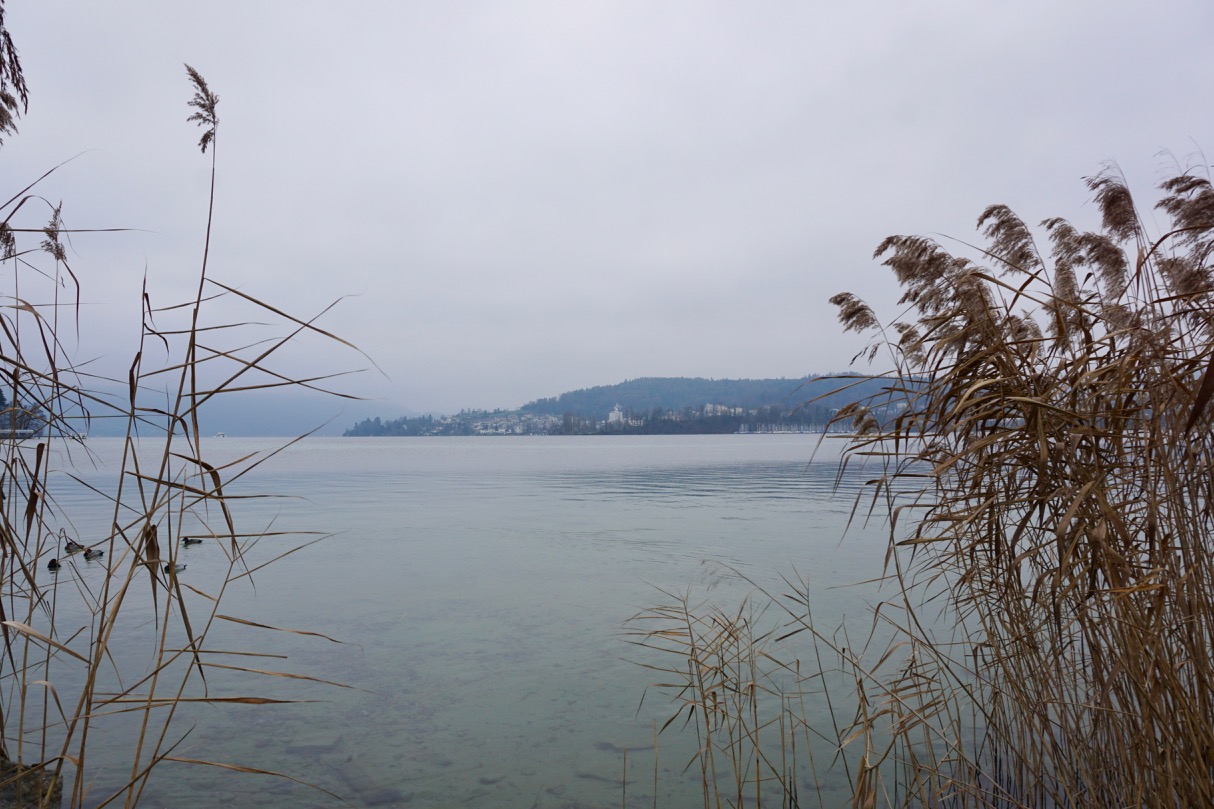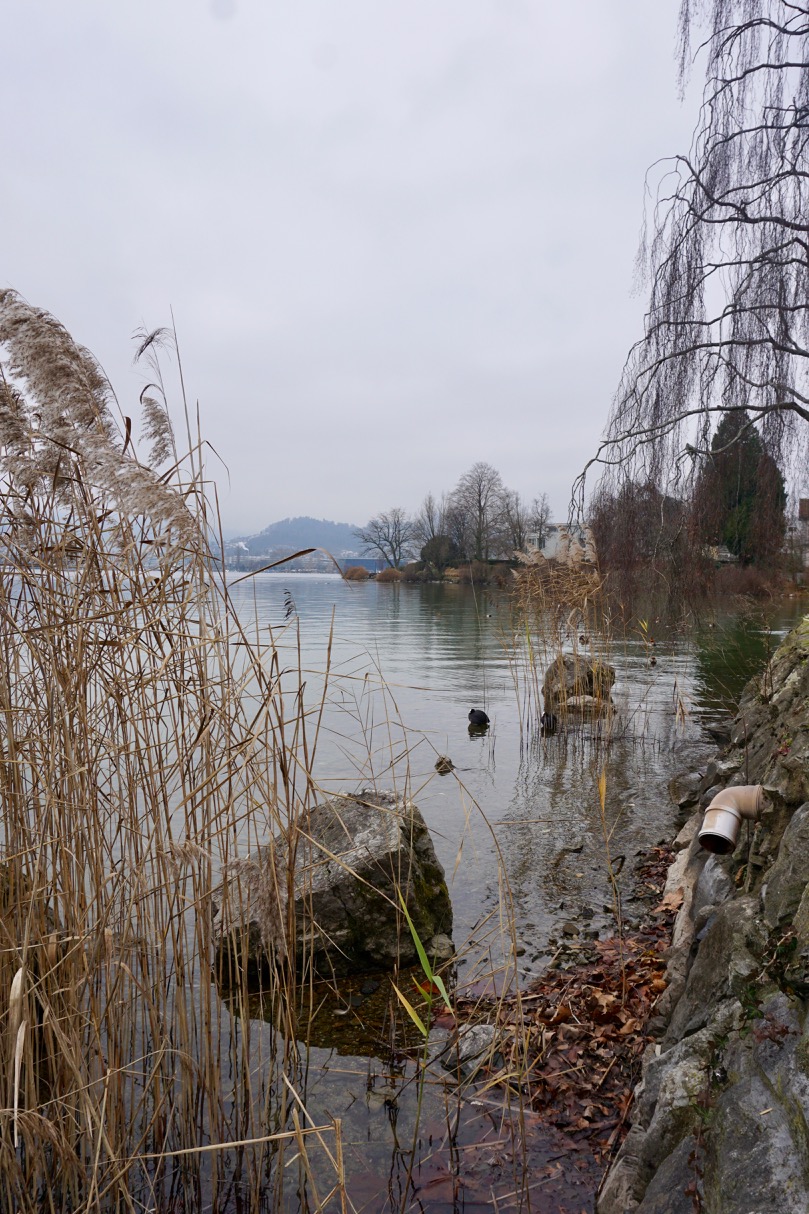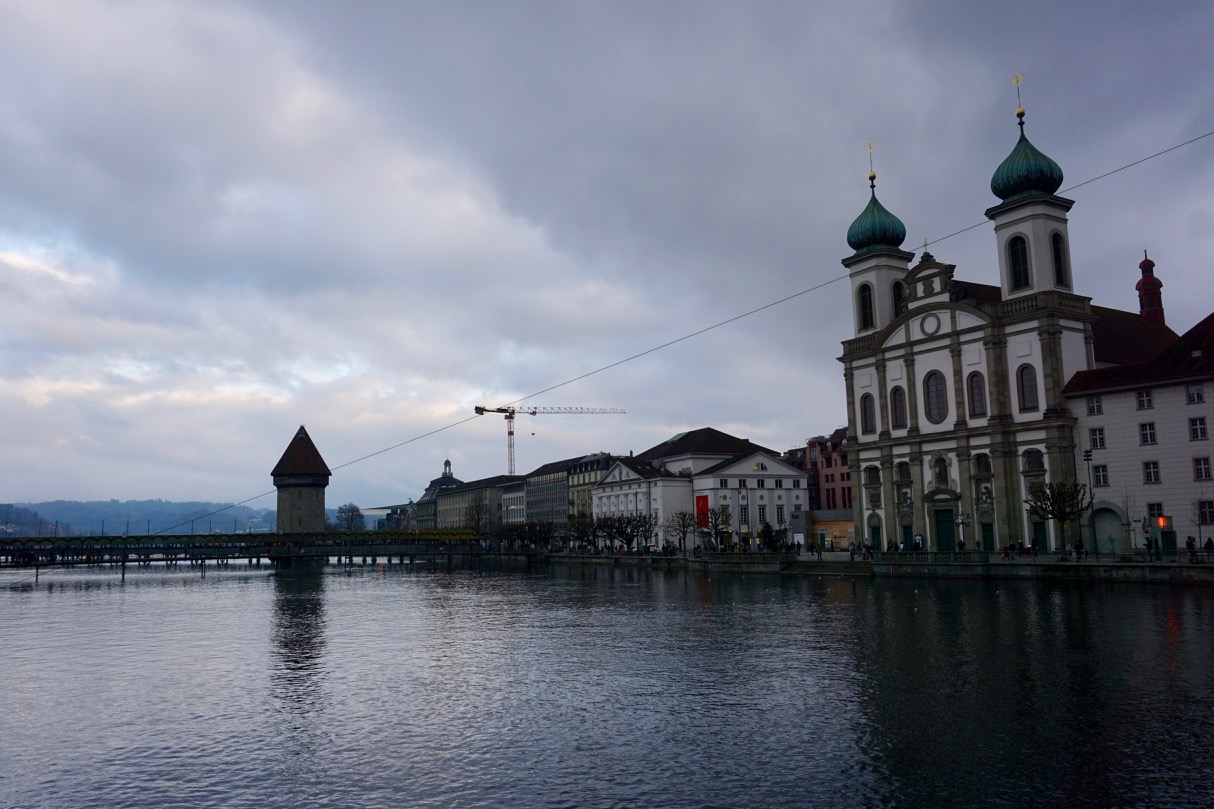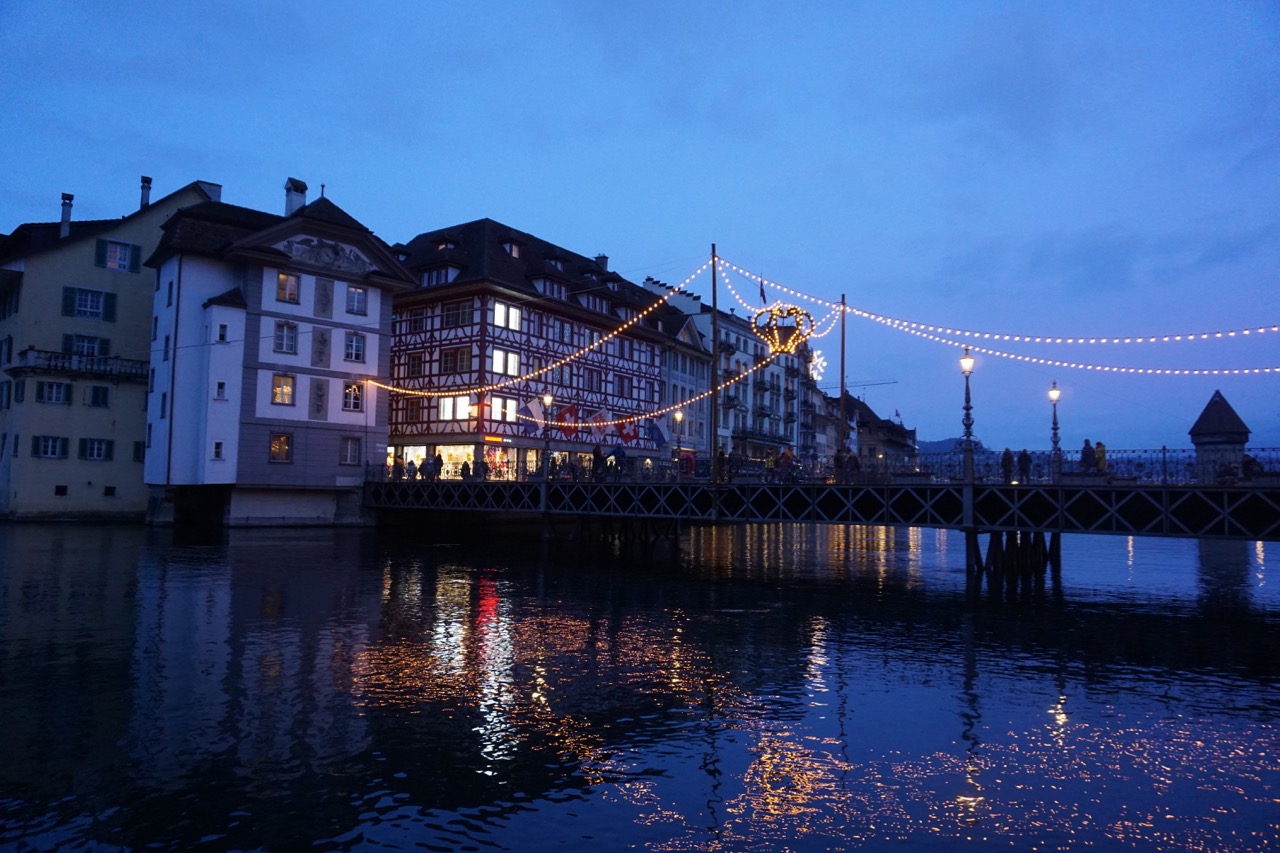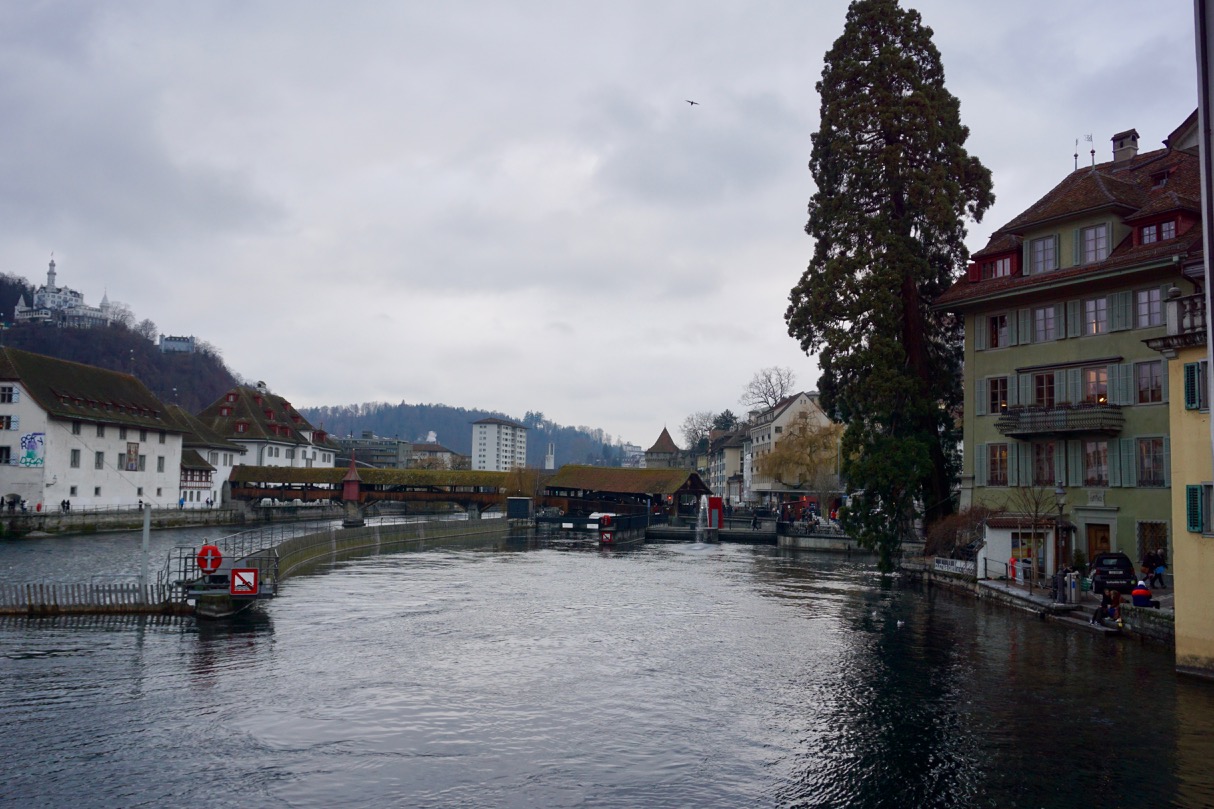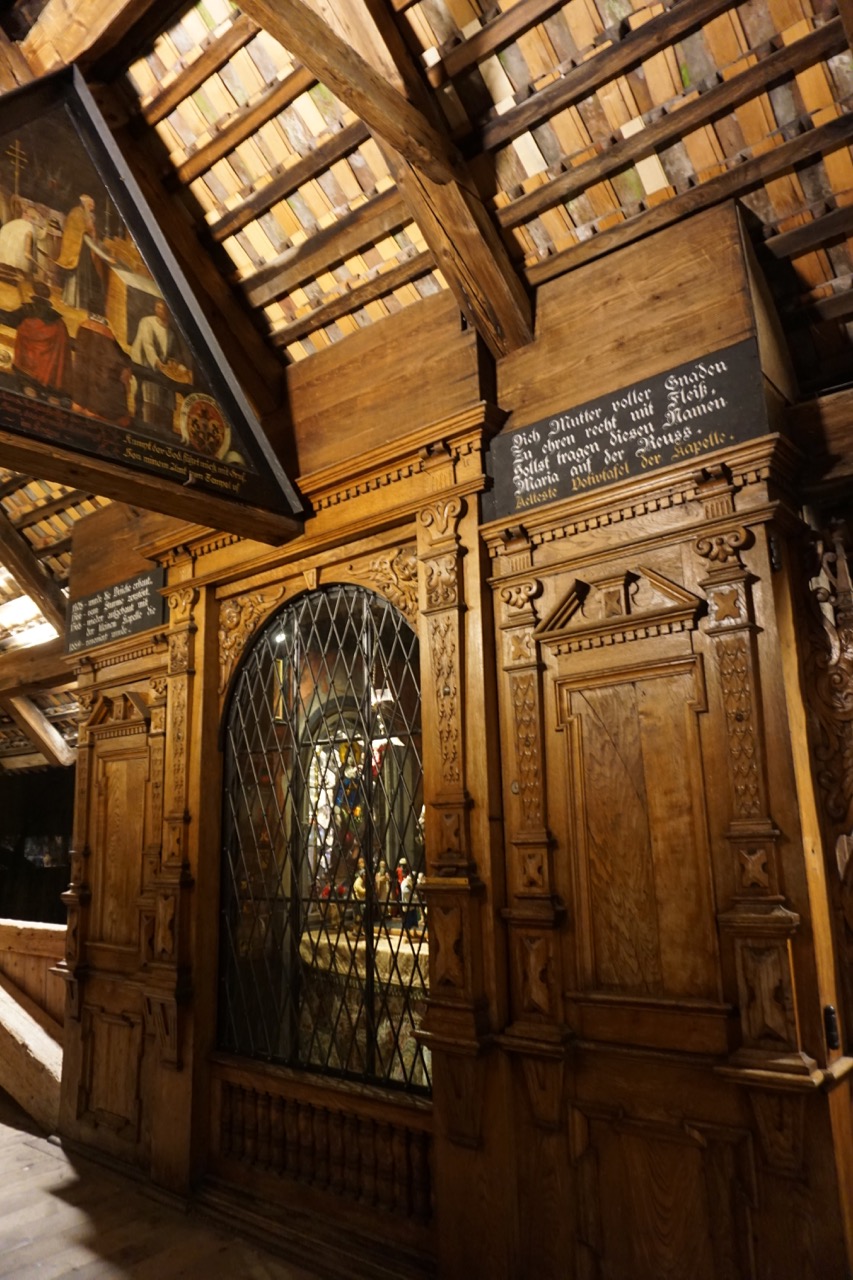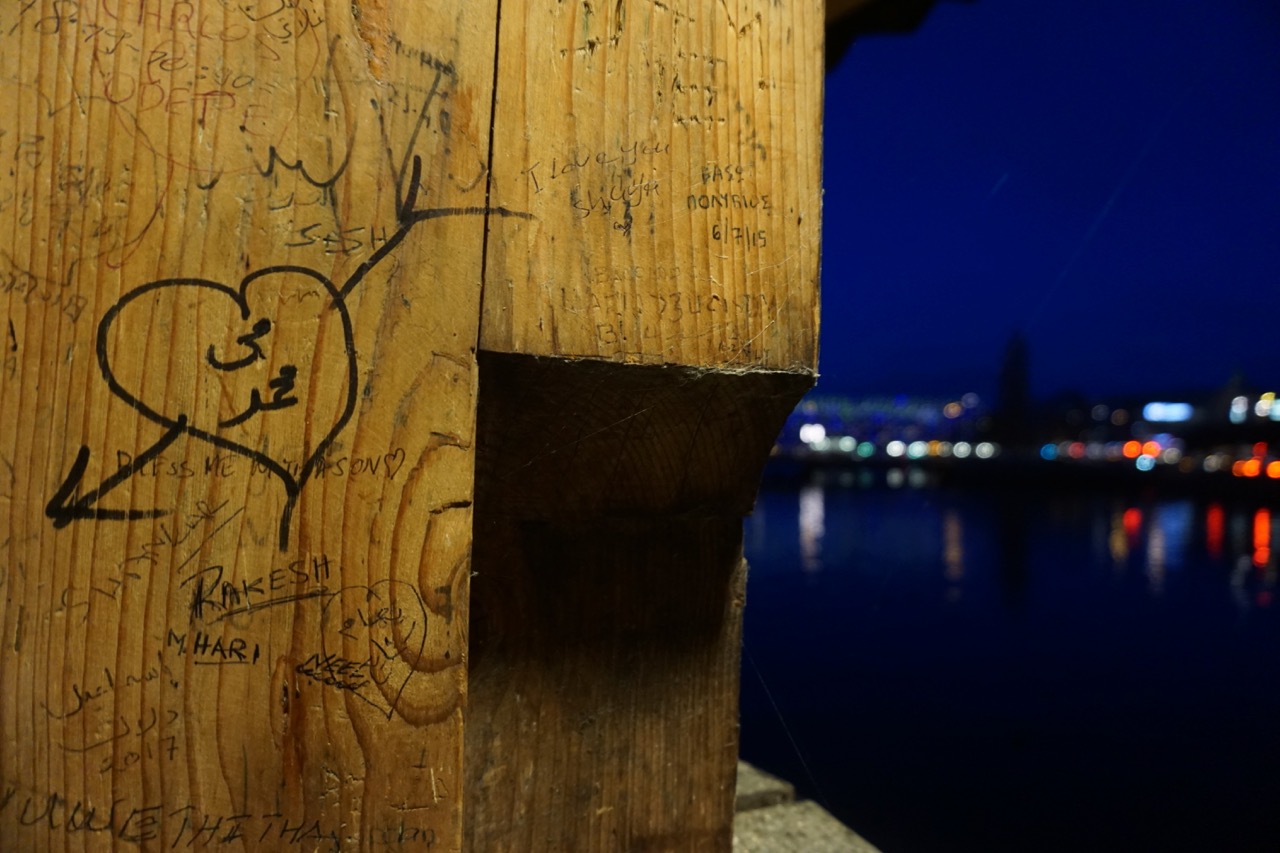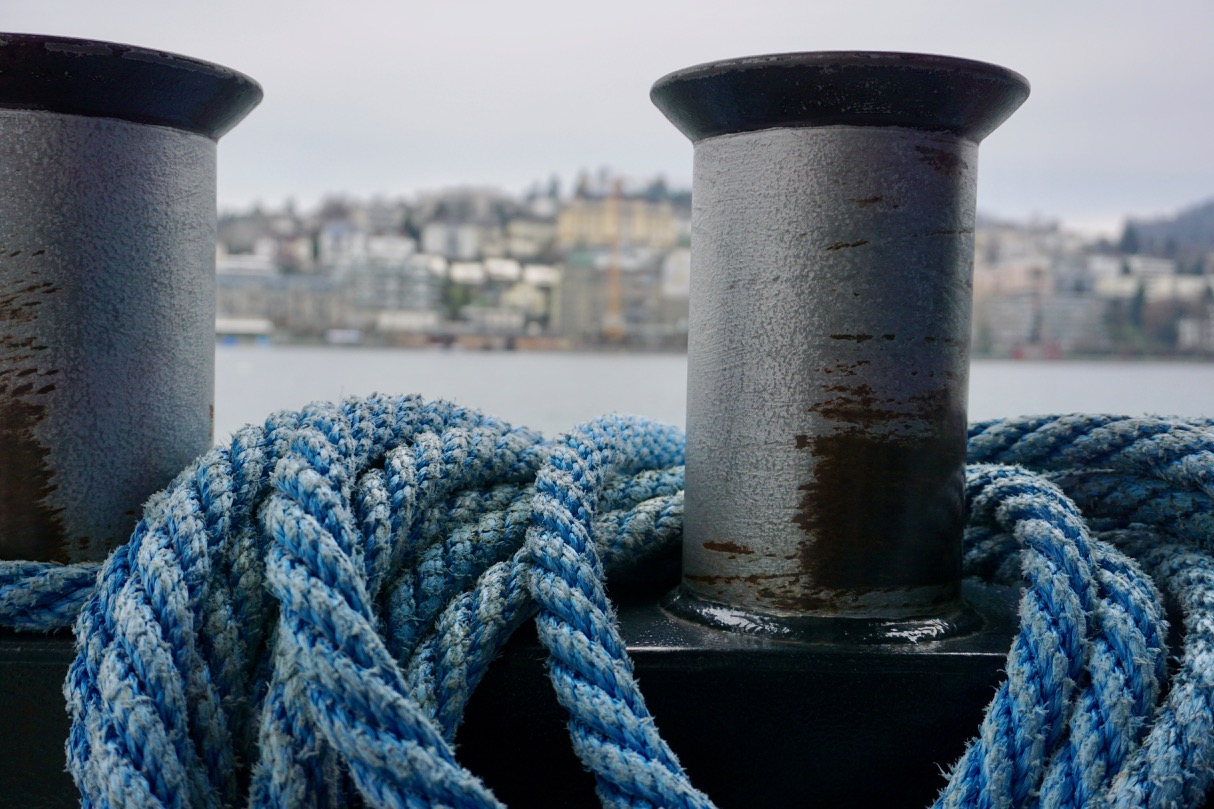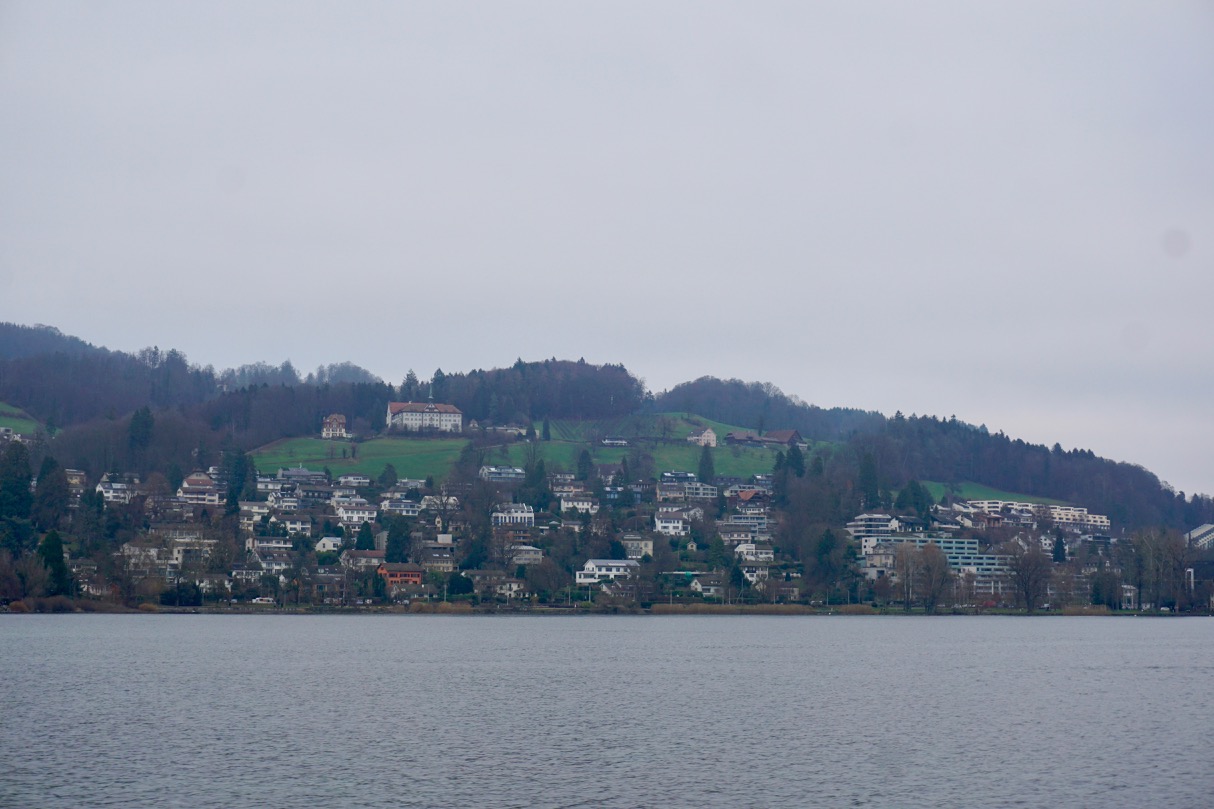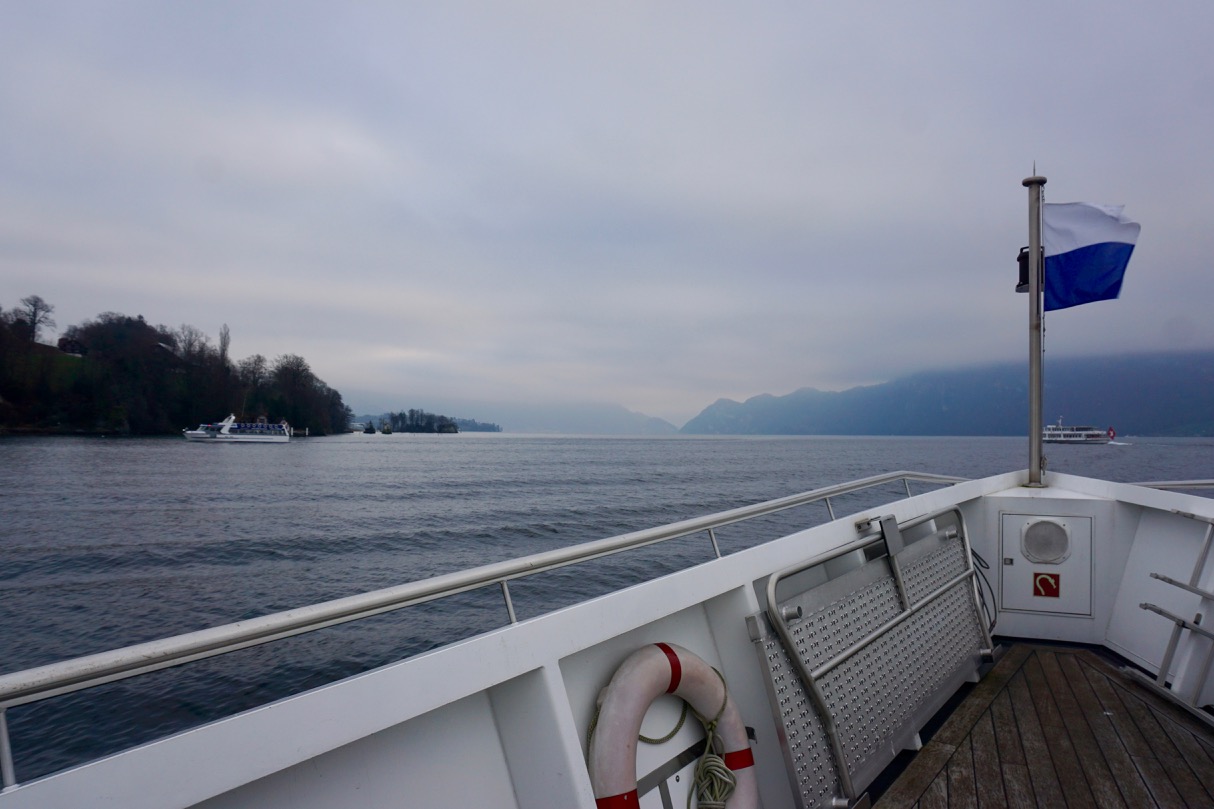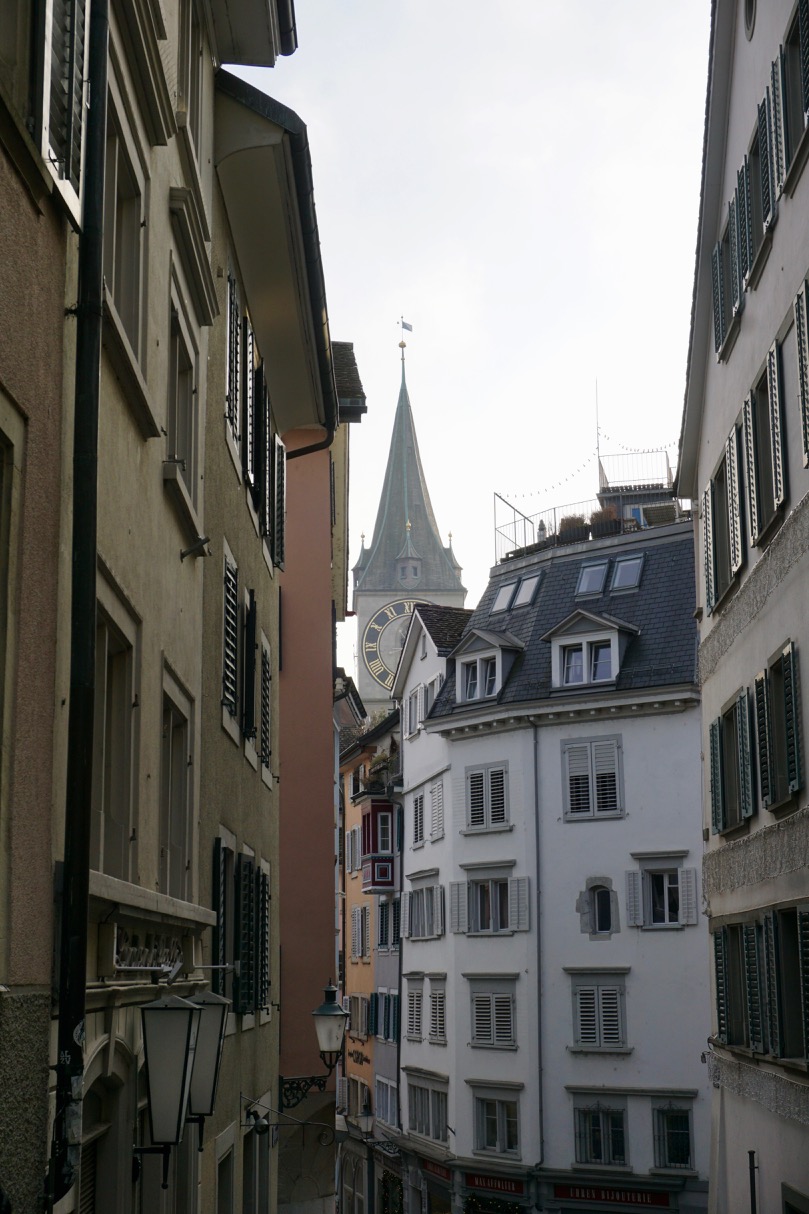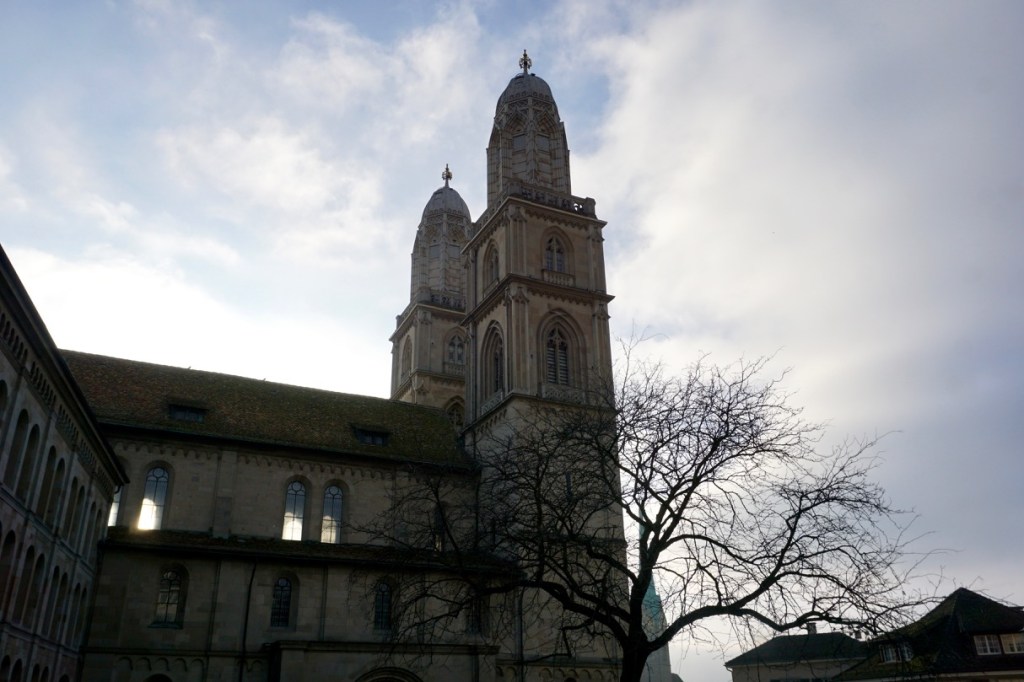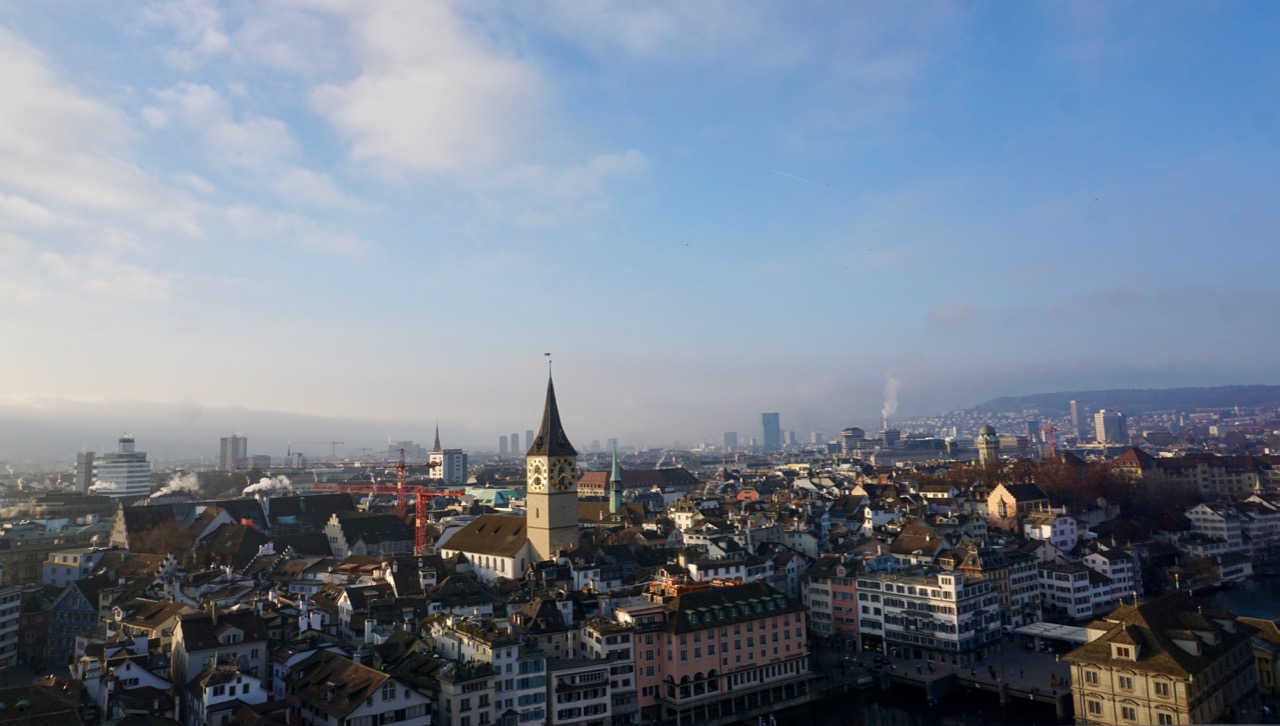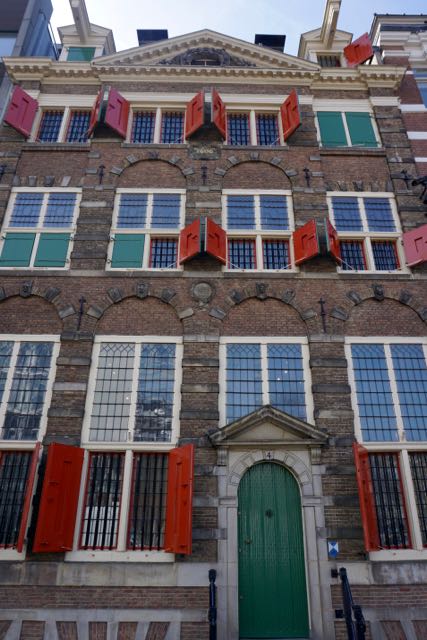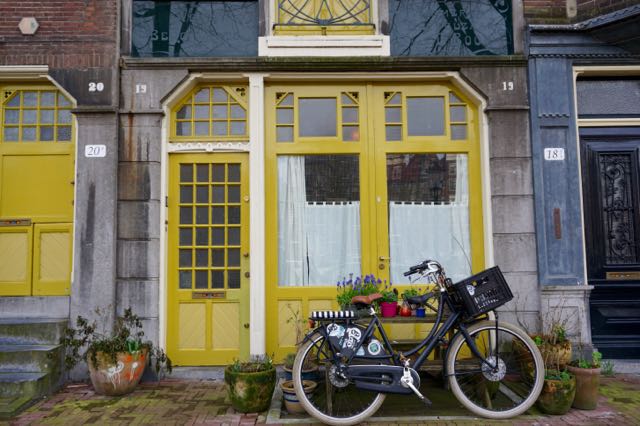Prior to visiting, most of what I knew of Nuremberg (Nürnberg in German) was that Nazi war criminals had been tried there and justice had been served. However, there is a great deal more to this medieval town and I was glad to spend a few days there.
My favourite part of European cities, and the thing that painted my fantasies of the Europe I first read about in historical fiction novels, is the old town. And now that I live somewhere with an old town, I can attest that it remains as charming as on the first visit.
Although Nuremberg’s famed Christmas market was closed due to Covid regulations, the main market remained open and I was pleasantly surprised by its variety. Nuremberg is a city of just over 800,000 people, several universities, and what seemed to be a large immigrant community. I heard more languages than I have heard in a while, which was fun, and there was a greater variety of vegan food here than I had expected, as well as cuisine that I cannot get in my small town.
I had been told that Nuremberg has beautiful churches, and this was certainly true. Ken Follett’s Pillars of the Earth came to mind; I know the building of churches and cathedrals was anything but romantic but they certainly provide an atmosphere to a place.
I had also been told to visit the landmarks of the Weisser Turm and Ehekarussell, the latter of which is a rather whimsical look at a marital relationship.
But no city is charming alone. No city is without a history, and sometimes that history is dark. I had two destinations in mind to pay homage to Nurember’s more recent history, which is why I caught a tram to the Documentation Center Nazi Party Rally Grounds on the first afternoon. The air field and still unfinished stadium complete with grandstand was the site of the Nuremberg rallies from 1933 to 1938. It was a cold afternoon with bright sunshine and shocking blue skies, and it was beautiful around the water. I am familiar with the history, but I never think about it with blue sky. Maybe that’s what made it difficult to be there.
And maybe that’s why it was important to be there. The woman with the hula hoop illustrated the juxtaposition of the atmosphere and I paused for a moment for think.
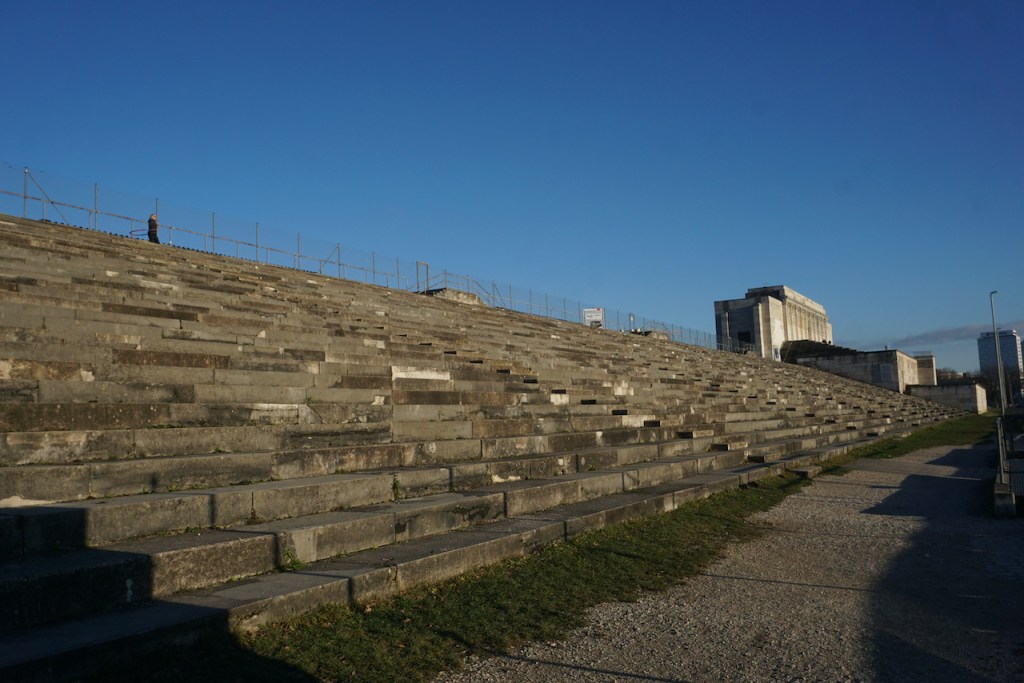
The following very cold morning, I returned to medieval history to visit the Kaiserburg, Nuremberg’s castle dating back to the Holy Roman Empire. It provided wonderful views of the city and the museum, which I visited as a respite from the cold, provided a nice overview of the previous nearly 1,000 years.
As someone who grew up in North America, I am still tickled by the thought of structures that have been, in some form, in the same location for such a long time. And I am saddened by the fact that North America, though it is not often considered in this capacity, has an equally old history, so much of which was destroyed by people who found no value in knowledge of the land and its environs.
As a contrast, though times are changing, I had earlier passed a memorial for LGBT victims of the Holocaust. This was a reminder of how we move beyond atrocity.

There is a history of hurt the world over and it is only through active awareness of it that we can live up to “Never again”. This attitude is also what made my later destination, the Way of Human Rights so poignant. And perhaps I am looking for signs (I don’t believe in signs but I also don’t not believe in signs) but the sunlight did take on significance that was likely undeserved.
I intentionally stopped at the Way of Human Rights on the way to the Memorium Nuremberg Trials and Courtroom 600, the room where the trials took place. It is still in use today and the audioguide provided a clear description of what the room would have looked like at that time.
It was eerie to be there, strange to see bright sunshine on the walls and to sit quietly and listen to a historical overview that I had often brushed off. I now remember why, after writing my undergraduate thesis on the Hitler Youth movement, I took a long break from Holocaust reading and research. The sense of obligation that I felt to read every single word has not gone away and each word takes a toll.
I was surprised, though, to find myself angry, and it was over Glühwein and my journal later that evening that I was able to place it. I was not angry at the perpetrators or at the bystanders. I was not angry at the deniers or those who continue spreading hate in countless communities. Rather, I was angry because the Nuremberg Trials meted out justice in a way that was reasonable, fair, and largely undisputed. These were actual trials with evidence and sentencing. Individuals were convicted as far as the evidence could provide and sentencing was carried out swiftly and with due process. These trials paved a way forward for how to deal with crimes against peace, crimes against humanity, crimes of war.
And yet, there is so much bias in legal systems today. Trials have outcomes before they happen. Consequences are seemingly inconsequential. I thought about this, I thought about recent global political news, and I was angry. The Nuremberg Trials provided a framework and an opportunity and I wondered at where this legacy has gone.
I learned a few things at the Memorium, too, like the fact that simultaneous translation was used for the first time here and that the translation staff numbered 350. The proceedings followed Anglo-American legal traditions, which differ from continental European legal traditions, and this created some controversy. There were follow-up trials in later years, including of Japanese crimes in the Pacific war, but the later trials in Europe never generated the press or popular support of the first trials.
It was dark by the time I set my journal and book aside and left the café where I had taken refuge hours earlier. Sometimes it’s just good to be around people.
As a medieval city, Nuremberg’s old town is still surrounded by walls and I found myself quite taken by them.
This fascination remained even without sunlight. The morning of my last full day was warmer than the previous days, and I was glad of this. My plan was to walk the 5k trail that is maintained around the walls. The walls are imposing and I can imagine how impenetrable they were when first built; they seem that way now, even with playgrounds for children, a skatepark, and courts for basketball and racquet sports.
Finally, I visited the Germanisches Nationalmuseum, which has an impressive and overwhelming collection of artifacts dating throughout human history. There were also installations from the Global Art Festival scattered throughout the exhibits and I enjoyed those very much. If you’re happy to spend a few hours wandering through a museum that makes its home in a former monastery, I’d recommend a visit.
The city of Nuremberg today prides itself on being a city for human rights, which is a tall order. Perhaps this is why I saw greater diversity there than I had expected, or why different languages were so prevalent. Or perhaps this commitment itself created the environment of the place. I was glad for the opportunity to be there and look forward to a return, perhaps when there are Christmas markets again.





